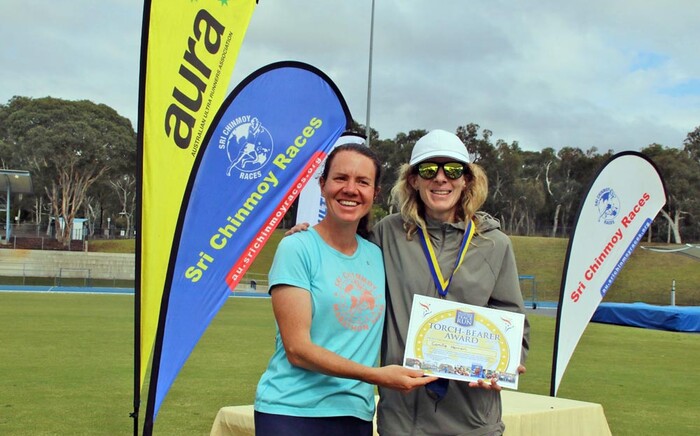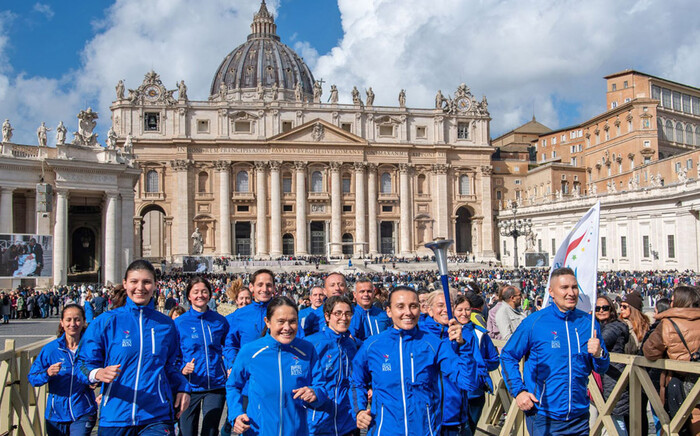
Latest news and features
The inner meaning of the 3100 Mile Race
The Sri Chinmoy 3100 Mile Self-Transcendence Race is the world's longest certified footrace - however, the race is about much more than records and the outer competition. It is seen by the runners and crew to be more like a pilgrimage - an opportunity to transcend oneself and experience a reality of pushing the body and mind beyond their usual limits. This years race featured entrants from Russia, Israel, Austria, Bulgaria, Slovakia, Scotland and the USA.
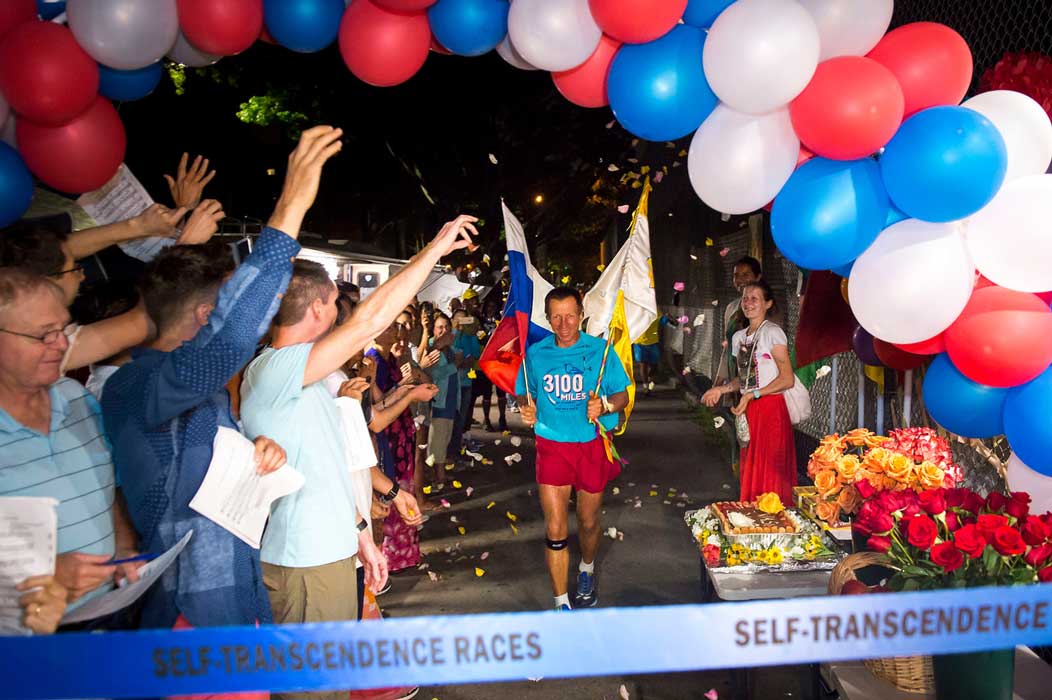
Taking just under 45 days, Vasu Duzhiy was crowned the winner of the 2018 Sri Chinmoy Self-Transcendence 3100 Mile Race. It was his seventh straight finish, and the third time he was the overall winner. The epic feat involved averaging 69.4 miles (111.693 km) per day.
The quiet-spoken Russian, who works as a foreman in a lumber company when not running, spoke at the finish about how winning the race is just one aspect of a much bigger picture.
“Everybody who finishes the race is the winner. I think the race is a game of the Supreme, and we just play our roles. It makes no difference if you win or you are second or last. It is just a game that you need to play your own role...
If by running here we are able to inspire others to go to to try new things and go to their limits. To do something in their own life. To be a better citizen of the world.”Vasu Duzihy 1
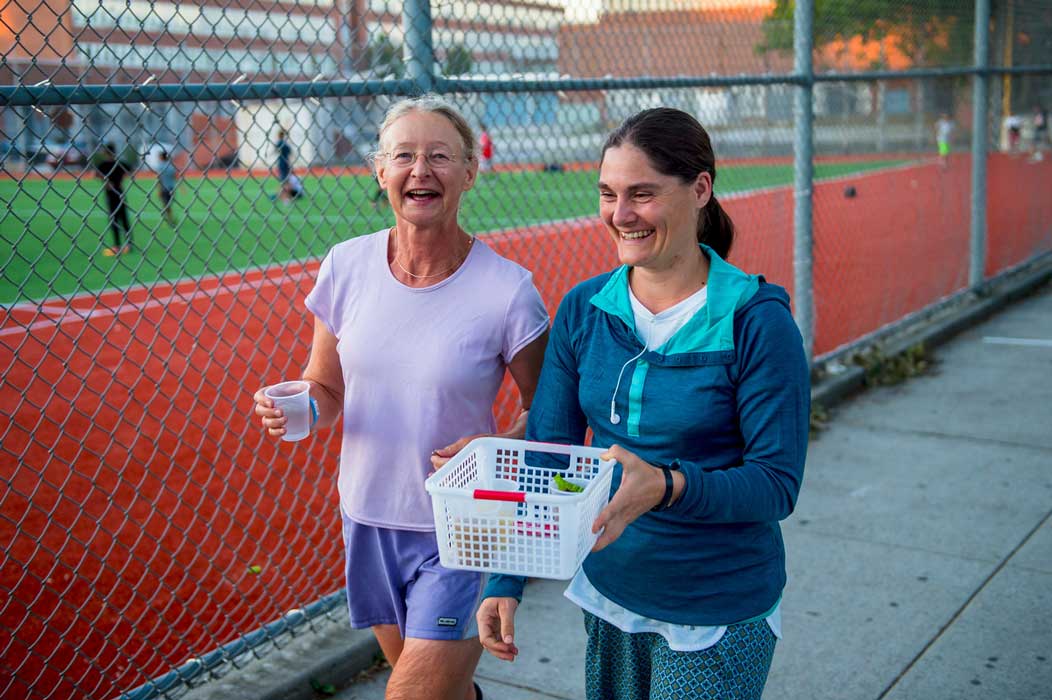
The runners of the 3100-mile race have to contend with the hot and humid New York weather. In addition, they have to face the challenge of running on hard surfaces for up to 18 hours a day for 52 consecutive days. At this race, there is no prize money or commercial presence. Occasionally, some outside media do visit the race, but mostly it involves long days of running around a modest and diverse borough of Queens.
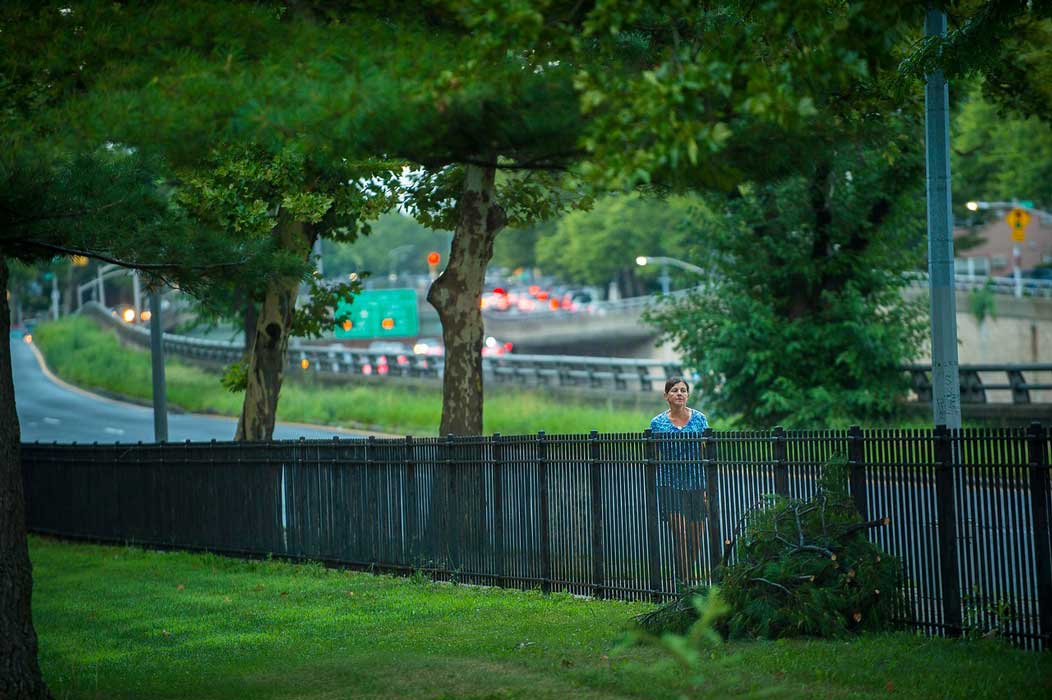
Outwardly, there is little reward for sacrificing two months of your year to come to this concrete block in New York. But, hidden behind the modest outer appearances, there is an inner pull which attracts runners to keep coming back.
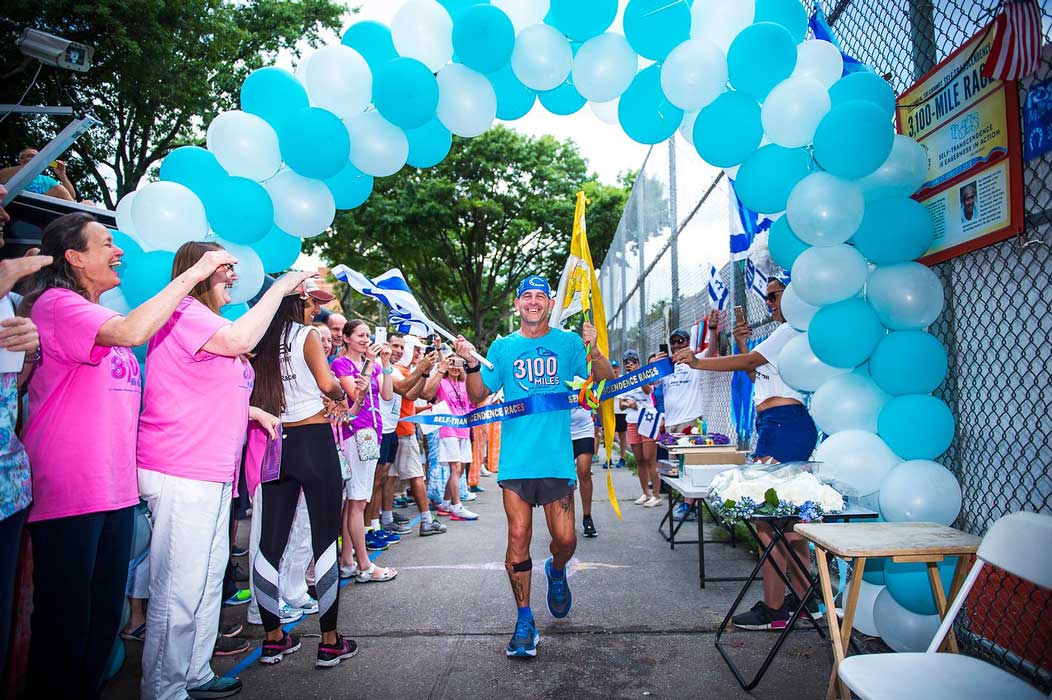
Second to finish the race was first-time entrant Kobi Oren from Israel. At the finish line, he explained that during the race he felt the inner necessity to see the race more as a pilgrimage and less as a competitive event. By changing his attitude to the race, he feels he was able to enjoy a very profound experience.
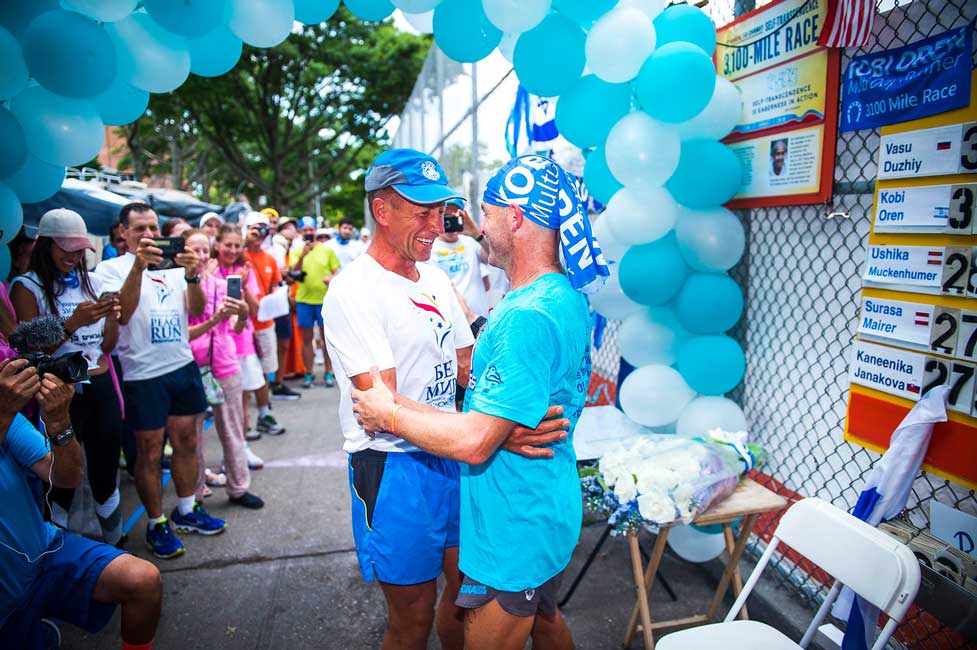
"If it is just to run 1,000 miles three times more then it is worth nothing. So I thought to myself, I want to do something else. So when I decided to change after I had completed my first 1,000 miles. Which I did in a record time of 13 days I decided I had to live differently. Then came the change.”
Kobi Oren 2
While it may be hard to comprehend the inner and outer experience of immersing yourself in such an all-encompassing race, the runners suggest that being cut off from the stressful aspects of ordinary life and becoming dedicated to the goal of self-transcendence on the physical, mental and spiritual planes helps to bring about a very different inner reality.
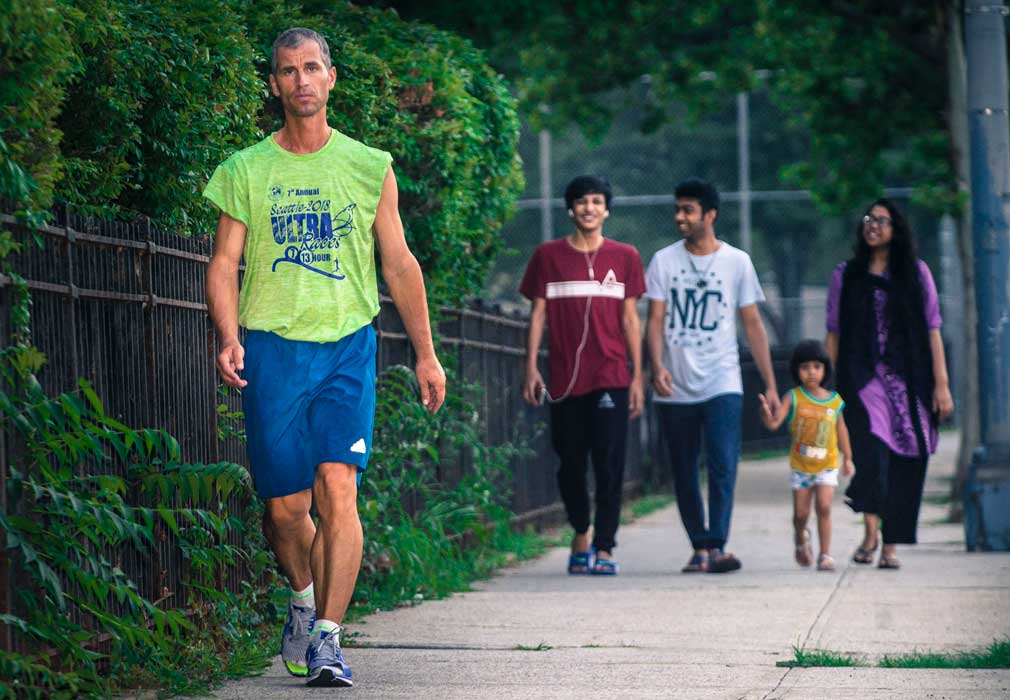
“For me, it is almost like connecting to a different world. You become detached from all that you have experienced before. You become connected to a new world, a new experience.”
Sopan Tsekov 3
2-time finisher from Bulgaria
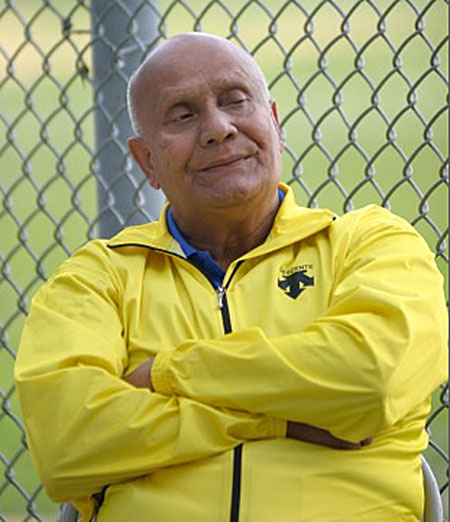
The 3100 Mile Race was founded by Sri Chinmoy in 1997, evolving out of the Sri Chinmoy Marathon Team's pioneering promotion of multi-day distance events. Sri Chinmoy was a great believer in the physical and spiritual benefits of running, and would come to the 3100 Mile Race course every day to offer encouragement and support to the runners. Sri Chinmoy saw this striving for self-transcendence as process which could give a real sense of satisfaction. As Sopan remembers:
“12 years ago when I completed my 2nd race here in 2006, he (Sri Chinmoy) was giving an interview to a journalist of a local TV station. It was four hours before my finish and, as I was running by, I heard Sri Chinmoy saying, 'we can be truly happy only when we constantly transcend ourselves, both inwardly and outwardly.'”
Sopan Tsekov
Every year, some of the runners will not be able to quite finish the distance within the allotted time frame of 52 days. The first past of the race took place during an intense heat wave, which challenged even the most veteran runners. Kaneenika Janakova from Slovakia is the women's course record holder, winning the female race in 2017 with a time of 48 days+14:24:10. However, in this year's race, physical difficulties mid-race caused her to slip, and at one point she was over 40 miles behind the daily average needed to finish the race. However, like the other runners, she approached this philosophically and saw it as a challenge to overcome.
“What I am observing is that my miles are not what they should be to finish the race. But just the same I feel that the more the race is happening, the more I want to continue.”
Kaneenika Janakova
(after 3 weeks) 4
Over the past few weeks, she has steadily recaptured the lost ground and now seems likely to finish on the last day.
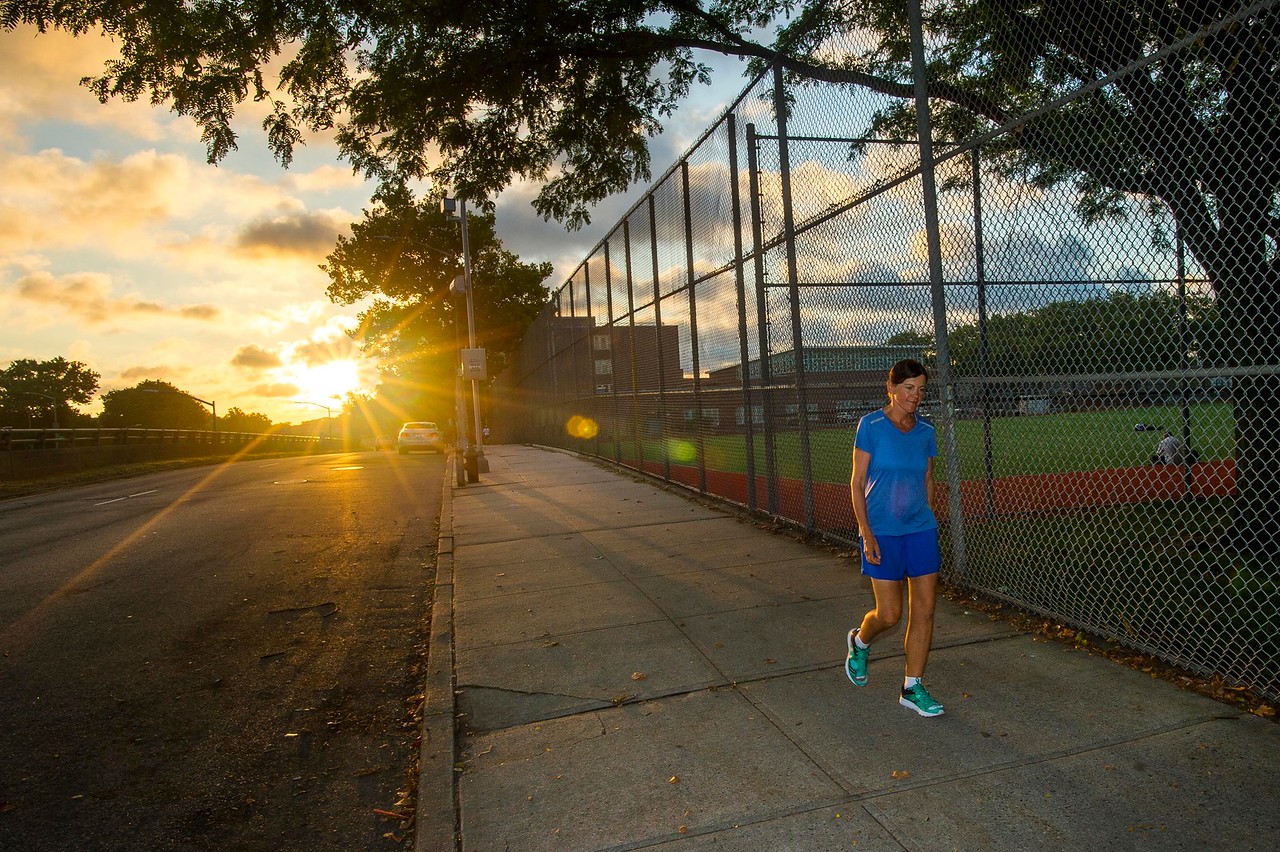
William Sichel hails from a tiny island in the Orkney Islands, Scotland with weather and conditions almost the complete opposite to a humid New York summer. At 64 years old, he is the oldest person in the race (in 2014, he became the oldest finisher at 60 years old).
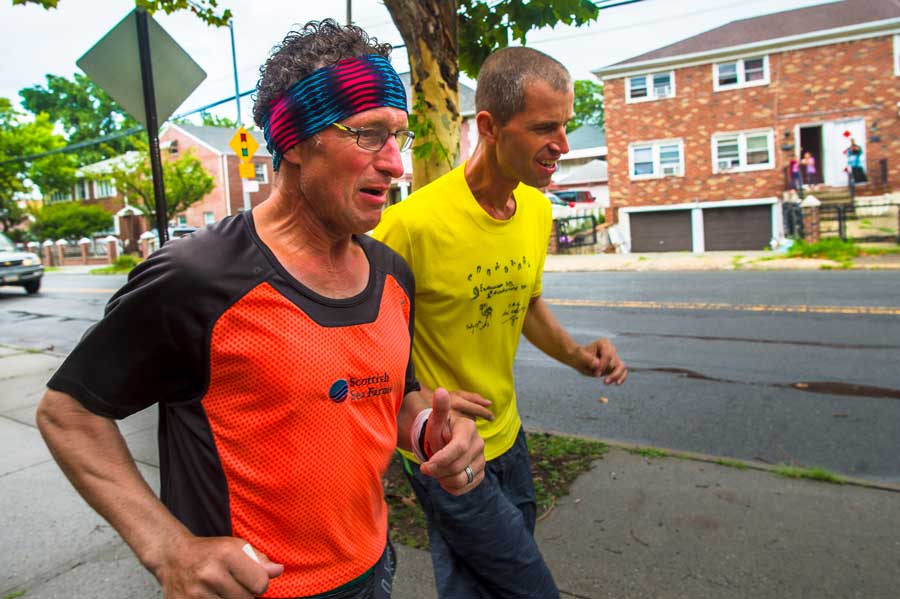
He is also just a few miles off the finishing pace but is appreciating the opportunity of this unique race - which gives such a range of emotions and feelings - all within the same day.
“This is all such an unusual experience, in every possible sense. Both athletically, physically, and mentally. It is such an unusual thing to do. There are only a handful of people in the whole world that have ever done this.”
“But those are the experiences that you take with you to the grave. But you have to do them to get the benefit that they will always give back to you.”
William Sichel 5
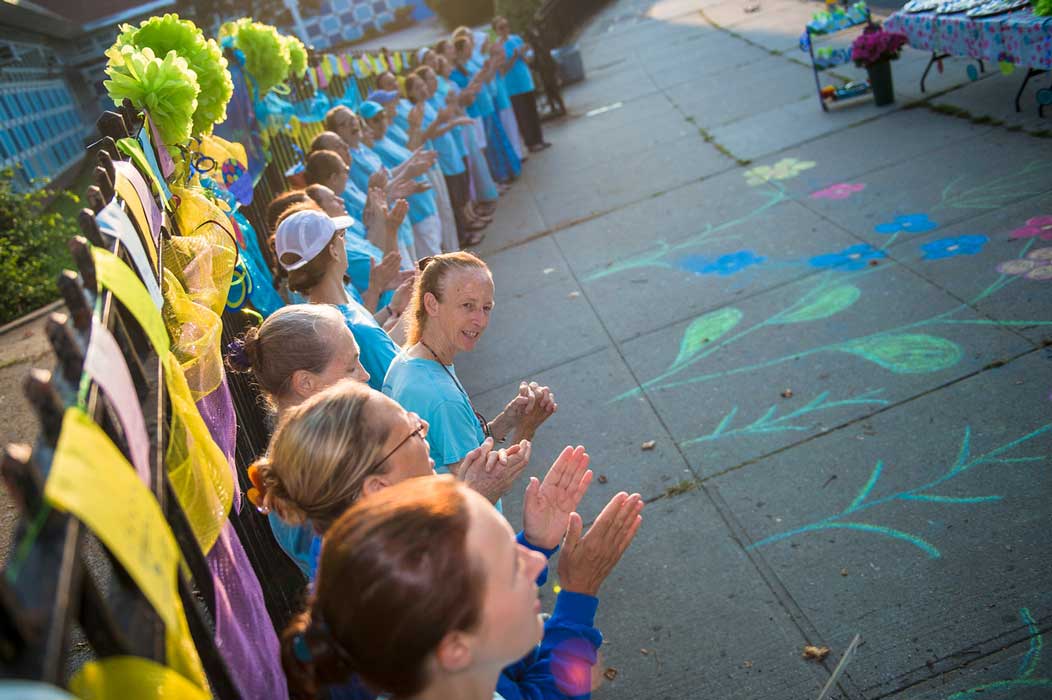
Related
- 3100 Mile Home page
- The 3100 Mile Race in the Media
Photos
- Jowan - Spontaneous Beauty
Quotes from the runners
- Utpal's blog - Perfection Journey
- 1. Vasu's Finish at Perfection Journey
- 2. Experience every moment at Perfection Journey
- 3. Constant Transcendence at Perfection Journey
- 4. My Dream at Perfection Journey
- 5. Sometimes I am in Heaven - at Perfection Journey
Interfaith music concert in Auckland
Recently, the Auckland Sri Chinmoy Centre organised a memorable evening of music as part of their contribution to the local interfaith community. At the event, there were ten local groups performing from various traditions. The concept was for different spiritual and religious groups to come together to share a free concert of peaceful and meditative music.
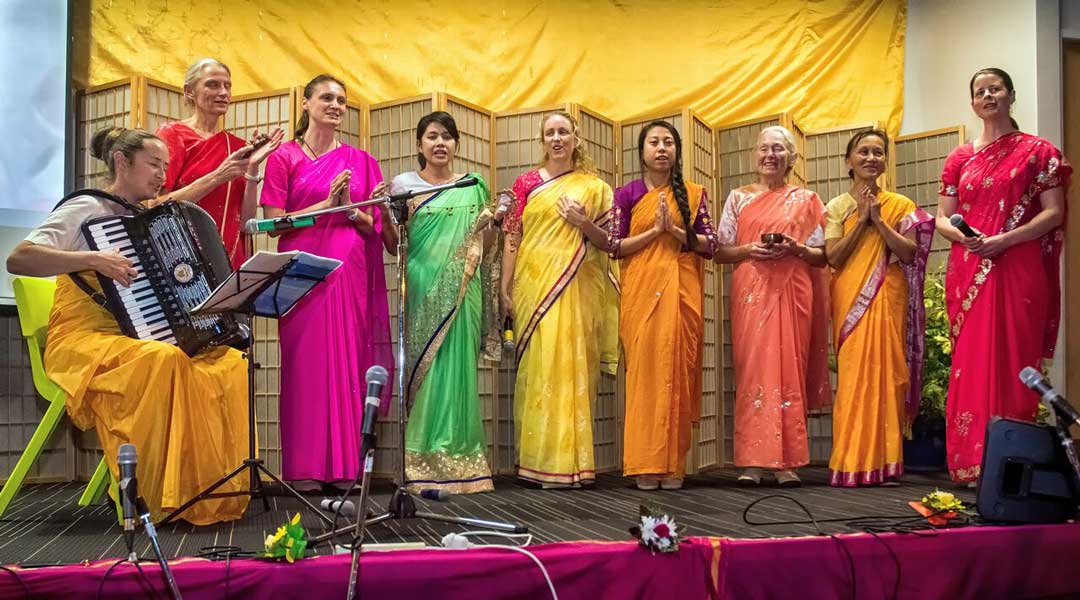
There were singers and instrumentalists from Sikh, Christian, Hindu, Buddhist, Tzu Chi and various other musical traditions. The evening showcased the diversity of Auckland’s cultures and their spirit of co-operation.
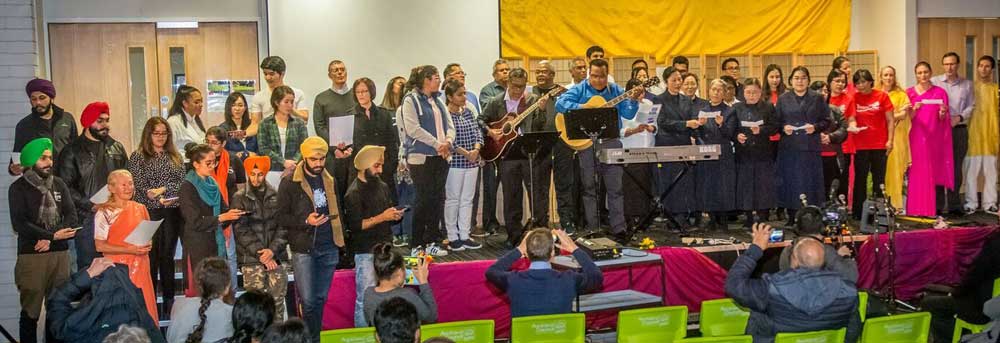
The concert – ‘Sounds of the Sacred’ – was held at the Fickling Centre in Mt Eden and was enthusiastically received by a capacity crowd.
Throughout his life, Sri Chinmoy often participated in interfaith events, as an active reminder we all come from the same Source. Sri Chinmoy also felt music was a powerful vehicle for bringing to the fore a sense of heartfelt oneness. He taught music can easily cut across social and religious divides by touching the heart of all who listen.
“Music will play a most important role in bringing about world oneness, for music embodies the Universal Heart, the Oneness-Heart. Music transcends the barriers of nations, nationalities and religions.”
Sri Chinmoy 1

Monk Party
Monk Party perform Ami Kandibona - published at Radio Sri Chinmoy.


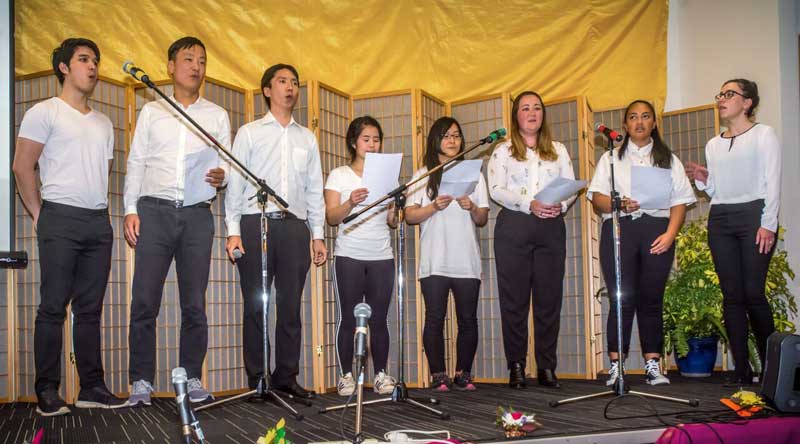
Related
- Interfaith and religious tolerance at Sri Chinmoy Centre
- Interfaith at Sri Chinmoy.org
- 1. Sri Chinmoy, Flame Waves, part 10, Agni Press, 1978
Inspiration-Letters: Experiences with Sri Chinmoy
Inspiration-Letters is a periodical collection of writings by members of the Sri Chinmoy Centre, each on a different topic. For the most recent edition, the topic was Experiences with Guru, featuring writings from Canada, Brazil, New Zealand and the USA.
Guru - a Sanskrit word for a spiritual Master - is the name by which Sri Chinmoy's students usually refer to their teacher, and each of these essays offers a glimpse through the student's eyes of what having a spiritual teacher of Sri Chinmoy's calibre is like.
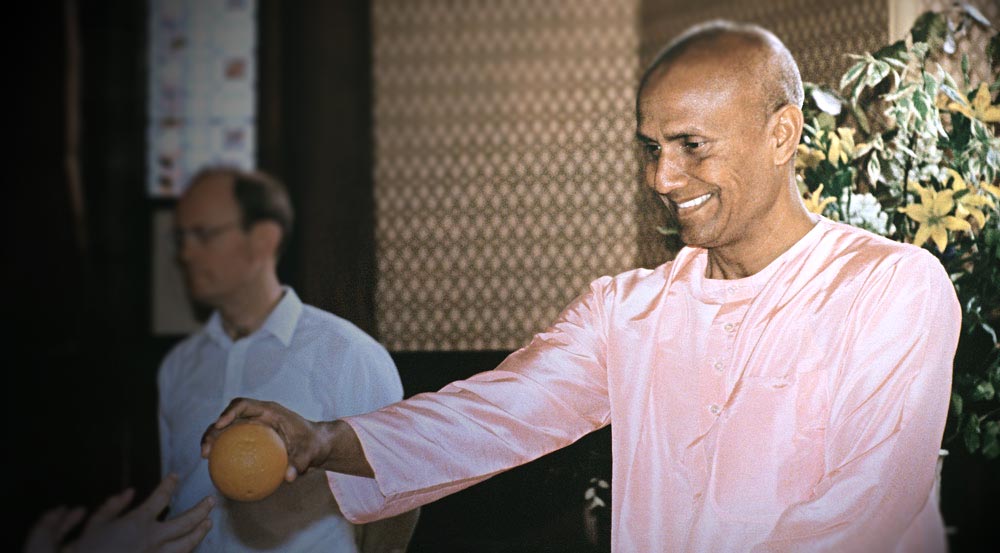
Essays in this edition
From the many incidents detailed in these seven essays, two themes stand out - how spiritual Masters such as Sri Chinmoy can infuse the smallest interactions and everyday occurences with spiritual power and meaning, and also how much he valued dedicated service and self-giving as a means of spiritual progress.
- The Universal Guru by Mahiruha Klein, USA
Mahiruha recalls arranging a ceremony for Sri Chinmoy with the professors of the university where he was studying. more » - Being with Guru by Purnakama Rajna, Canada
"...I was never a disciple who had any kind of outer relationship with Guru. He never called me out of a prasad line to speak to me or ask me a question, and that’s the way it was for many of us. There were just too many of us for that to be a reality, but that didn’t mean that we couldn’t feel his inner blessings...in the blink of an eye Guru could send you a silent blessing that would leave you in bliss, almost unaware of the outer world..." more » - One summer afternoon by Jogyata Dallas, New Zealand more »
"...We were running up and down the ladder of consciousness, from mind to soul to mind to soul, being shown that inner peace, stillness, soulfulness are quickly accessible through practice and intent, that meditation can be found and practised anywhere..." more » - Angels and Elevators, and China Memories by Sharani Robins, USA
"...While the Christmas Trip with Guru included many highlights, what I remember most is an experience that might be classified as a morality tale...." more » - A few stories with Guru Sri Chinmoy by Suchana Cao, Argentina
Three short and cute stories from visits to see Sri Chinmoy in New York and from our yearly Christmas trip. more » - One touch by Patanga Cordeiro, Brazil
Patanga describes an experience showing how even the touch of a spiritual Master can bestow an experience that still remains with him to this day. more » - Three (well-documented) recollections by Dhiraja McBryde, New Zealand
"Fungible is the human memory – fungible and frangible and fragile. There are fungi in there – dry rot, and mildew and a few lurid mushrooms. We think that we remember, we think the old synapses are recording it all like dutiful stenographers, like scribes in the Akashic records department – but we are mistaken...." more »
Related items
- Download entire edition as PDF
- Inspiration Letters - browse through almost 30 editions
- Experiences on Sri Chinmoy's path - More videos and articles related to experiences with Sri Chinmoy
Songs of the Soul Brazilian tour
Since 2008, the Songs of the Soul concert series has offered the music of inner peace in over 200 concerts around the world. Encouraged by Sri Chinmoy, his students have created music groups around the world to arrange and perform his music for the public, and the Songs of the Soul concerts bring together these music groups to offer Sri Chinmoy's music in a variety of different choral and instrumental styles. From 7 - 16 July, 30 visitors from 13 countries toured Brazil, playing concerts in Sao Paulo, Curitiba, Rio de Janeiro and Niteroi.

Some of the performers
In all, there were eight different performances; here are some photos and audio from four of them.
Agnikana's Group

Kanala

Mandu and Visuddhi

Paree's International singers

In total, 1560 people came to the concerts, and the audience enjoyed the performances very much, giving standing ovations on each of the nights. Among the nice comments we received was one from the director of the Niteroi municipal theatre, who said that in his 20 years as a director of the theater, he had never experienced something like these concerts.
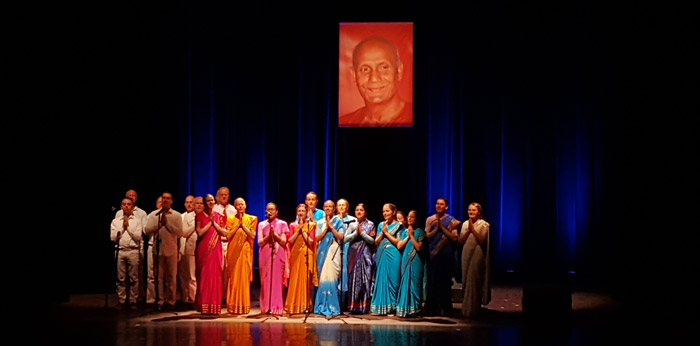
Brazil, Brazil, Brazil, Brazil!
The Supreme Lord’s wonder-thrill.
The sports world’s summit-height,
Everywhere you are blossomed delight.Sri Chinmoy
words of the song composed in honour of Brazil 1
Related
More music from the performing groups on Radio Sri Chinmoy: Agnikana's Group • Paree's Group • Kanala • Pavaka
North American Peace Run 2018
The international runners from the North American leg of the Sri Chinmoy Oneness-Home Peace Run is currently travelling around the United States, as it visits a multitude of towns and local communities which form a cross-section of American society.
The Peace Run was founded by Sri Chinmoy in 1987 to offer practical opportunities for those wishing to create a more harmonious world. The motto of the Peace Run is Peace begins with me - and one person at a time, the Run hopes to kindle the ideals of goodwill and peace inside the hearts of everyone they meet.

“World peace can blossom throughout the length and breadth of the world only when the world-peace-dreamers, world-peace-lovers and world-peace-servers desperately, sleeplessly and breathlessly long for the full manifestation of peace here on earth.”
Sri Chinmoy 1

Since starting in New York earlier this year, the Run has visited several US states, Mexico and Canada. The runners currently heading east through Illinois on their journey back to New York. The Run has been well received by countless individuals, schools and local community centres, who have joined the runners as they pass through their location.

The run has also featured on many local news networks, such as this live TV footage from KUSI in San Diego
- International Peace Run makes stop in San Diego - KUSI news.
Video highlights
Photos from the run
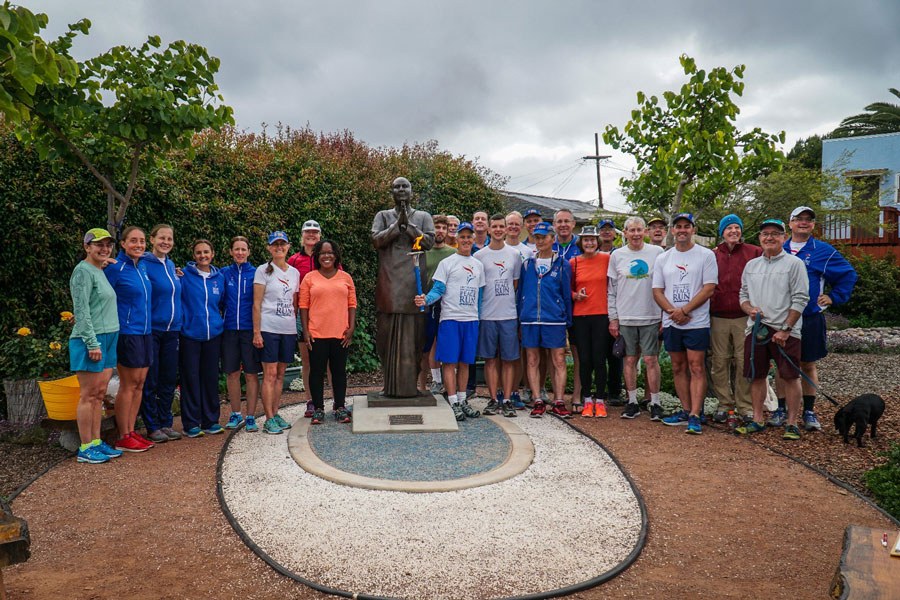
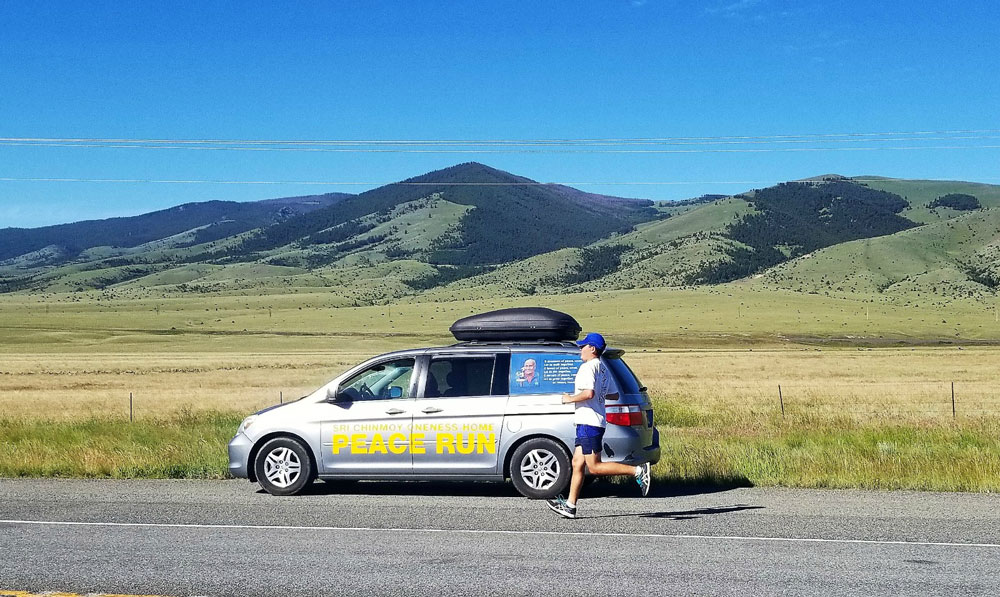
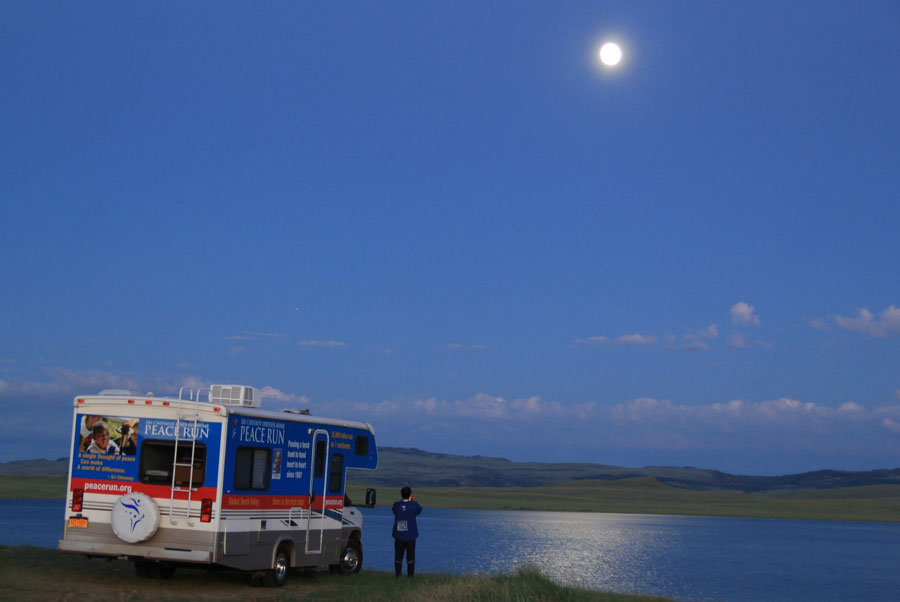

Related
- US Peace Run - latest news
- 1. Sri Chinmoy, A peace-collecting pilgrim-soul, Agni Press, 1980
Conference on interfaith spirituality
Members of the Miami Sri Chinmoy Centre recently helped to organise a very successful interfaith conference in Assisi, Italy, which sought to examine how spirituality can play a role in bringing about a more just, peaceful, sustainable and happier world.

The conference was organized and planned by Elisabetta Ferrero of our Miami Centre, with the help of a talented international steering committee. Elisabetta, a professor of Global Studies at St. Thomas University in Miami, was joined at the conference by fellow Miami Centre member Durjaya Thomas Pliske, who is also a university professor. Assisi was chosen because it is the birthplace of St. Francis (1182-1226) who is widely honored as the patron saint of the environment. The delegates came from many backgrounds: environmentalists, organic agriculture, religious and non-religious spiritual groups, U.N. affiliates, supporters of the Earth Charter, indigenous cultures, scientists, the business-legal community, social and environmental justice advocates, educators and philosophers.
The conference members also had a two-hour meeting in the Vatican with Cardinal Turkson, who has been selected by Pope Francis to work out the practical implementation of the message in Laudato Si, a papal encyclical which Pope Francis calls on all the world's people to work together to preserve Mother Nature and make the world fairer. A day of the conference was given over to discussing this encyclical.
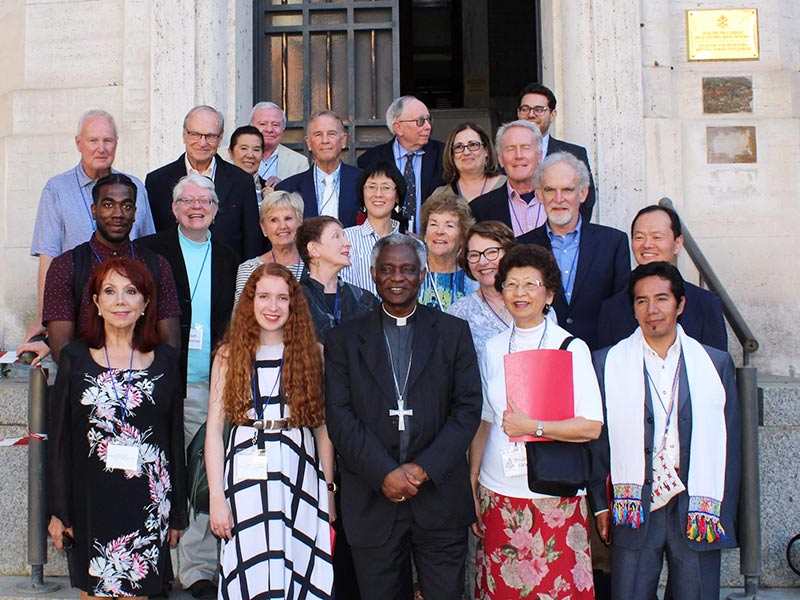
During his lifetime, Sri Chinmoy founded several initiatives to keep the dream alive for a better and more harmonious world, and participated in many interfaith initiatives in order to illustrate the underlying unity of different religions and spiritual paths. (more on our interfaith page)
"If we live in our oneness-heart, we will feel the essence of all religions which is the love of God. Forgiveness, compassion, tolerance, brotherhood and the feeling of oneness are the signs of a true religion."
Sri Chinmoy 1
For his part in the conference, Durjaya offered a heart-centred meditation to the group and offered his own thoughts on these important goals of human endeavour. Speaking about the conference, Durjaya writes:
"Representing the Sri Chinmoy Centre, an organization devoted to promoting spiritual awakening, practice and service, I had the opportunity to share and work with seekers from other paths, some based in established religions (Christianity, Buddhism, Shinto) and also from indigenous shamanic traditions. Although we had diverse approaches to spiritual Truth, we all had in common the understanding that there is no separation of self-transformation and world-transformation. They go hand in hand.
Whatever illumination we receive from our individual sadhana (spiritual work) to purify, illumine and transform our individual lives, that progress is spread into the world consciousness. This is true whether we progress through prayer, the creative arts, meditation, mental expansion and inclusiveness, selfless love and dedicated service or a yoga that combines all these." - Read full article by Durjaya
- 1. Sri Chinmoy, World-destruction: never, impossible! part 1, Agni Press, 1994
Festival of Meditation
Dublin's now-established annual ‘Festival of Meditation’ took place this June, with eight days of events in three different venues attended by approximately 325 people. The festival included talks, workshops and a public concert of meditation music with two international groups. The concert featured guided meditations and mantras so that the public could join in.

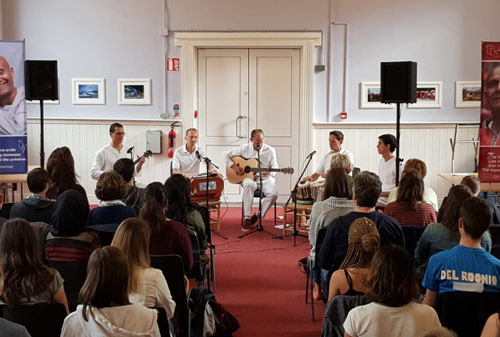
Ashru Dhara
The concert groups
Both of the groups have played meditation concerts in many countries, and are very popular with audiences.
Mangala's Group - an international female singing group led by Mangala from the Dublin Centre
Ashru Dhara - male instrumental group from the Netherlands, Germany, France and Ireland.
The festival also included a weekend workshop on sports and meditation given by guest speaker, Abhinabha Tangerman from Amsterdam. Abhinabha has a 2:27 marathon personal best, and has recently entered the world of Guinness record-breaking, setting records in unique disciplines such as one-handed clapping and keeping balloons in the air.
The week finished up with an Evening of Music & Mantras which incorporated excerpts from Sri Chinmoy’s book ‘The Source of Music’
As the event was considerably over-subscribed, a follow-up week of introductory classes were organised which are currently on-going.
Impossibility Challenger 2018 in Portugal
Impossibility Challenger is a festival dedicated to pushing the limits of human possibility and achievement. The event was founded in 1982 by Sri Chinmoy and this year's (2018) edition was recently held in Leiria, Portugal. The event was organised by a team of volunteers from the Portuguese Sri Chinmoy Centres who welcomed participants from around the globe. During the event new personal, national and world records were set, ranging from long-distance swimming and one-handed clapping to successfully reciting poems.

Impossibility Challenger is open to anyone who wishes to try and set a world record or personal best in any non-Olympic discipline. Participants are free to tackle existing records and also create their own unique personal challenge.
The spirit of the event is to encourage individual self-transcendence in a joyful and supportive environment. It is a non-commercial event with participants motivated by the wish to challenge themselves and inspire others through their own unique ways. The event welcomes participants from all over the world and a diverse range of backgrounds.

Highlight from 2018 edition include
Abhinabha Tangerman (Netherlands)
- Completing 615 alternate one-handed claps in one minute.
- New record for consecutive one-handed claps in one minute.
- Successfully keeping two balloons in the air using only his head for 1 minute 9 seconds.
- Successfully keeping three balloons in the air for 39 minutes 49 seconds.
Ashrita Furman (USA)
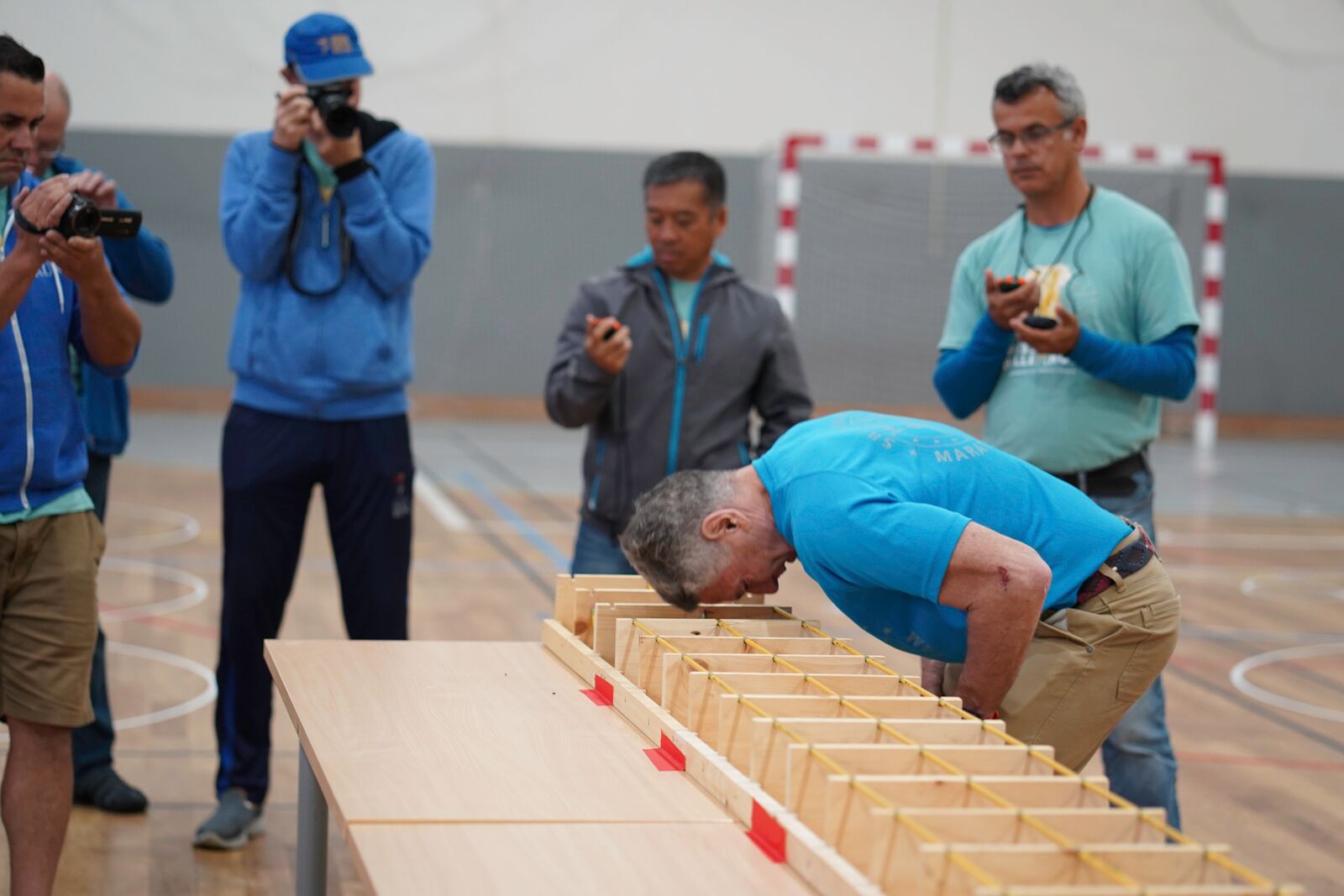
- Catching 40 marshmallows with his mouth in one minute, that were shot to him with a home-made catapult.
- Extinguishing 102 burning blow torches in one minute using his tongue.
- Breaking 64 pencils with his head in one minute.
Ashrita has been the holder of the most Guinness World Records for over 25 years.
Andrea Mercato from Italy

- Swimming 200 km in a 25m pool in a total of 7 days.
The International Sri Chinmoy Centre Girls Music Group
Consecutively performing 1,397 songs, for 27 hours 27 minutes 27 seconds.
Isilda Ferreira Duarte from Portugal

Creating the biggest cloth wheel "mother in law" with 1.98 metres in diameter and 6.18 metres in perimeter, using the traditional Portuguese technique. (World Record)
Núcleo de Espeleologia de Leiria and friends
Vertically ascending 5730 m and descending 5730 m on a climbing rope in 12 hours.
Gustavo Fonseca from Portugal (7-years old)
Folding seven different origamis with seven folds each in 27 minutes.
Hugo Rito from Portugal
Running a half-marathon distance (21 km) backwards in 3 hours 32 minutes 4 seconds.
Jorge Cardinalli from Portugal
Simultaneously spinning 21 plates on sticks for 1 hour 19 minutes 21.32 seconds.
Maria Leão and friends from the Sri Chinmoy Centre
Reciting 645 poems consecutively for 7 hours.
Radek Rosa from the Czech Republic
Pulling a 17,299 kg truck loaded with 13 people for 20 metres in 47.44 seconds.
Vaibhava Kuschnow from Austria
Climbing a 5B+ degree climbing wall, 10 metres high, with inline skates on his feet and without using the brake stopper. It took him only 56,20 seconds.
Carlos Vieira from Portugal
Cycling one-handed for 8 hours 6 minutes and covered a distance of 74,4 km.
External links
Our 6-day Race champion Petra explains the link between running and meditation

Petra Kasperova from the Czech Republic took won 2018 Sri Chinmoy Six Day Race in New York this April with a total of 370 miles - at only her second attempt at running a multi-day event. Petra is a meditation student of Sri Chinmoy, who felt that sports and meditation could go hand in hand as part of a fulfilling life. As well as offering free meditation classes and concerts around the world, Sri Chinmoy's students also organise athletic events, and have become especially well known for organising ultramarathon races such as the 6 day race that Petra won.
 On the surface, these races are quite gruelling and the runner has to overcome many obstacles. However, as Petra explains, the key for her is just to stay happy.
On the surface, these races are quite gruelling and the runner has to overcome many obstacles. However, as Petra explains, the key for her is just to stay happy.
"I try to go with the flow and do what gives me joy. Because it is about joy! Do not underestimate the power of joy. I mean, suffering and pain is part of it, but overlooking it all should be your fulfilled, joyful you."
Participants in these races are often out on the course for many hours at a time, and so learning to deal with having so much time on your hands is essential. For Petra, the practise of meditation is key:
"(Meditation) has been part of my life since 2010. It has transformed my life and I cannot imagine my life without it. It is something very natural, something that we all can do if we try to stop the constant flow of thoughts flooding our minds. It takes practise, patience, perseverance but it is 100% worth it."
"The techniques can change from race to race and even during a race. I like to repeat mantras, qualities and prayers...I try not to think at all, just to be focused. Repeating qualities like gratitude seem to keep my mind clear and make me more aware of what is going on inside of me and also outside of me...
I love identifying myself with the beauty and vastness of nature. I get a lot of inspiration and joy from Mother Nature. I also like to sing songs. I find that when the mind is focused, not roaming about thinking and daydreaming, I feel a constant flow of energy flowing in and through me, my intuition seems to work better, I am more present in the here and now and I feel more conscious of what I am doing and why."
Of course, one big question is why people would want to do these kinds of races. For Petra, these races are part of a quest for greater self-discovery and to be a better person. Her teacher, Sri Chinmoy loved the concept of self-transcendence - the idea that one could get tremendous joy and fulfilment by going beyond their perceived limitations. Petra describes running as "part and parcel of our spiritual path... Running is a symbol of self-transcendence, physical fitness, discipline, self-giving... which are all pillars of Sri Chinmoy's path."
"I find that running has made me stronger, not just physically but on many different levels. It is always when we go outside our comfort zones, outside what we think is possible, when we transcend ourselves in any field of life (not just running), that's the time where we need to dig deep, and when we do, we get glimpses of who we truly are and who we really want to be – for a happy self and a happy world."
 Petra was recently featured in a new inspirational book 'Superhuman' by Rowan Hooper. The book highlights a range of people who have achieved notable features of self-transcendence. Hooper examines the inner strength, discipline and motivation of these different individuals who have achieved extraordinary things.
Petra was recently featured in a new inspirational book 'Superhuman' by Rowan Hooper. The book highlights a range of people who have achieved notable features of self-transcendence. Hooper examines the inner strength, discipline and motivation of these different individuals who have achieved extraordinary things.
Related
- Petra's Victory in the Six-Day Race 2018 at Run and Become
- Six-Day Race at Sri Chinmoy Races
- Superhuman by Rowan Hooper at Amazon
Photos: Utpal Marshall. Perfection Journey (Blog on finish of 2018 race)
New recordings at Radio Sri Chinmoy
At Radio Sri Chinmoy there are new recordings of music from groups within the Sri Chinmoy Centre. It includes performances from meditative functions and also a humorous play. The music includes a sitar performance by Adesh, soulful Sanskrit chants from Vedic Fire and more dynamic arrangements by Jagadhata's Group.
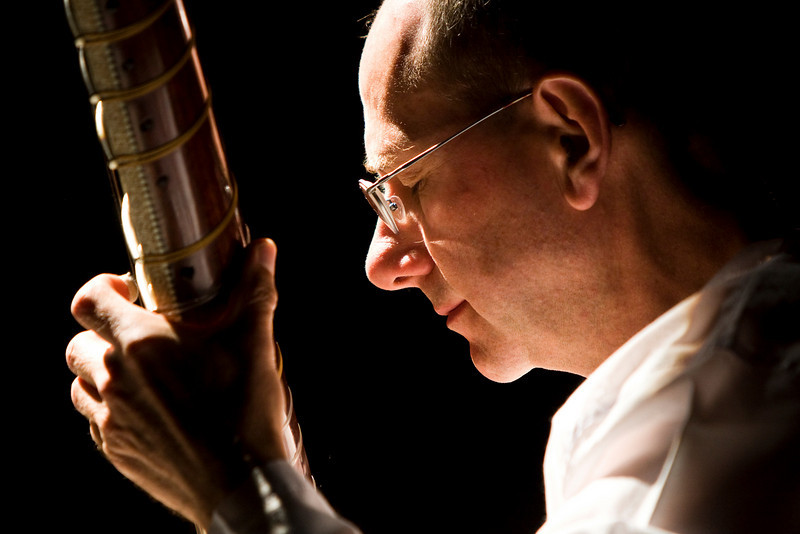
Radio Sri Chinmoy regularly publishes new music from groups within the Sri Chinmoy Centre. It is also a store of many recordings made by Sri Chinmoy during his Peace Concerts and recording sessions.
“Music is psychic enlightenment. Music is the supreme fulfilment of the aspiring human soul.”
Sri Chinmoy 1
Recent recordings
- Flute music playlist - A selection of Sri Chinmoy's numerous flute performances, using a variety of different flutes.
- Sitar music by Adesh - The sitar is a haunting and soulful instrument from India. On this recording, Adesh performs his interpretation of the music of Sri Chinmoy.
- Jagadhata's Group - a dynamic and joyful arrangement of Sri Chinmoy's music.
- Meditation performances from New York, 31 May. Two different groups - an all female acapela singing group and a male instrumental group. Both performing the music of Sri Chinmoy with different contrasts.
- The Astrologer fulfils his prophecy - an original story by Sri Chinmoy adapted by Suren Leosson from Iceland. The story has been given a humorous twist and flavour of "Jeeves and Wooster."
Related
- Sri Chinmoy Music - more info at Sri Chinmoy Centre
- Meet musical members of the Sri Chinmoy Centre
- 1. Sri Chinmoy, Sound and Silence, Part 2, Agni Press, 1982
New Book on Nature and Spirituality
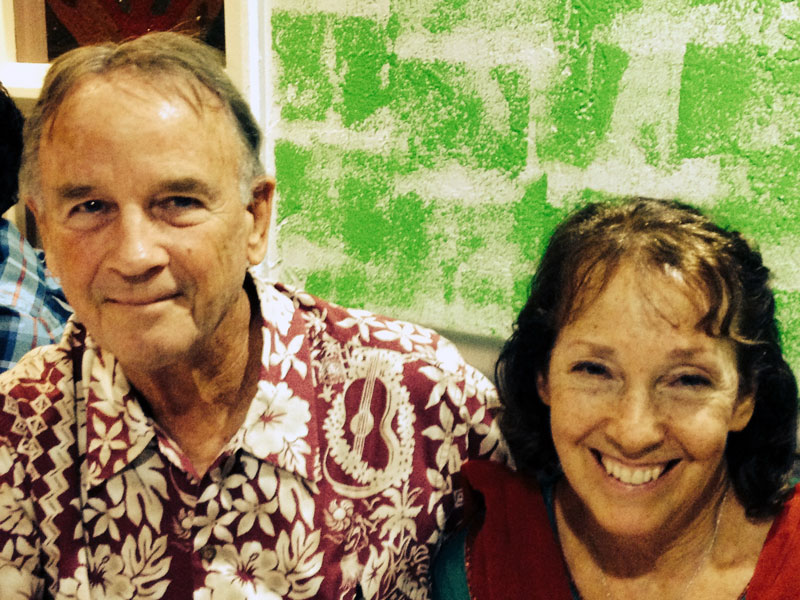
Durjaya Thomas Pliske is a university professor and co-leader of the Sri Chinmoy Centre in Miami with his wife, Drishti. He has been a nature-lover since childhood, and last year he published a book called Light, Truth and Nature which attempts to integrate the spiritual, artistic and scientific perspectives of Nature.
How did you become interested in Nature?
In this life, it started when I was a very young child, probably age 2 or 3, but who knows how far back the roots go. I was lucky to live my early childhood in a rural part of North Carolina surrounded by forests, meadows, farms and gardens. Some of my earliest memories spring from my curiosity about living things: insects, spiders, birds, reptiles, flowers, our pets (dogs and cats) and the farm animals that were our neighbors. I was a very tactile kid. I wanted to catch things, hold them and examine them, not just observe. I learned the hard way about bees, wasps, spiders and some snakes, luckily not from any of the poisonous snakes that are common in the American South. Once when I was five I managed by stealth and stalking to catch a woodpecker by hand in front of my parents and relatives. They couldn’t believe it. “Did you see that? Tommy caught a bird! He just picked it up!”

Butterflies were my childhood embodiment of absolute beauty and soul’s thrill - I became a lepidopteran expert while still in elementary school, and began to collect them. Over the years I amassed a huge collection, but when I met my Guru, Sri Chinmoy, in the early 1970s and began to see Nature from a spiritual perspective, I gave up accumulating dead specimens and reverted to my childhood appreciation of their living beauty. At our Miami Sri Chinmoy Centre we have planted butterfly nectar flowers and larval hostplants, so we can always enjoy their presence - more than 30 species as regular visitors.
How did you become interested in spirituality?
My mother was my first spiritual teacher and guide to the inner aspect of Nature. Wherever we lived, she was the gardener and ecosystem manager of the family. She taught me about the sacredness of life and the natural cycles of the environment, with a perspective that was a combination of Christianity and indigenous spirituality. My father was a biological/medical scientist and taught me about the physical side of Nature, but he left the spiritual instruction to my mother. Both parents encouraged my wildlife and ecology interests, even when I started keeping reptiles in my mother’s laundry tubs in the basement. Once when a big water snake escaped down there, I confided first in my father. He said, “Tell your mother you found it and let it go, unless you want to wash your own clothes for the rest of your life.”
My first contact with Eastern spirituality came in 1960 when I bought a book at the Amherst, Massachusetts, town fair for 25 cents: Yoga Psychology by Swami Abhedananda, a disciple of Sri Ramakrishna, a great spiritual master who lived in Kolkata, India in the 19th century. I began reading it and at some point showed it to my college psychology professor - he advised me not to waste my time. Still, I found echoes of my mother’s teachings in Abhedananda’s writings and kept it my library.
In college I learned about Charles Darwin and the doctrine of evolution. This was a major revelation. I gradually came to conceive the universe as a single event unfolding in time and space, each part, including myself, playing a specific role in the cosmic drama. I recall discussing my views of existence with one my fraternity brothers, a philosophy major. He asked me, “What about philosophy and religion?” I replied, “I don’t need them; all I need is Nature and evolution.” He looked at me in exasperation and told me, “You’re a barbarian!” I agreed. There was nothing left to say.
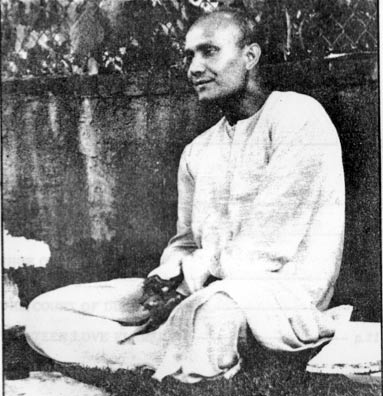
When I became Sri Chinmoy’s disciple in 1973, I discovered that the universe had more to it than the river of changing forms. There was divine consciousness within - Love - something again I had learned from my mother, but Sri Chinmoy’s radiant glance communicated and anchored this Truth - experience deep inside my heart. A few years later I asked a question at a public meditation, “Guru, what is the supreme goal of science?” He replied (my paraphrase), “You are a biologist. You must learn to see life in everything - not just in plants and animals - in everything.” In a few words he had unified Love, Life, Nature, Purpose, Joy and my own existence. I was stunned and grateful, and have spent all the years since aspiring to grow into that wisdom.
Over the years how has your love of Nature and spirituality developed and influenced one another?
For me they are inseparable. It is a matter of identification. Guru showed me, as he is showing all of us at every moment, that using our heart power we have to expand beyond our little I and lay claim to our transcendent cosmic I which is our spiritual goal.
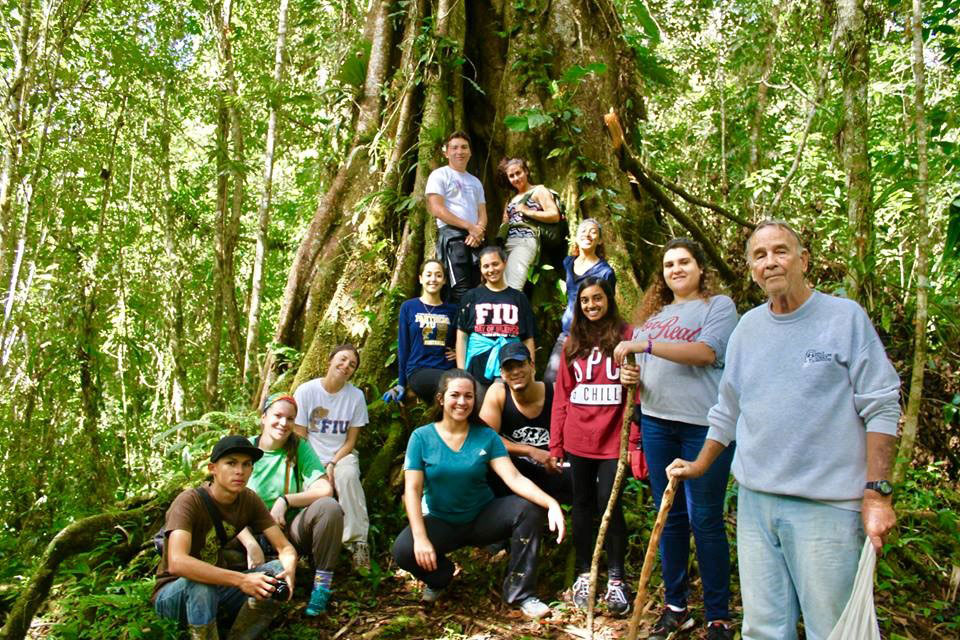
As a teacher and a disciple of Sri Chinmoy, I felt the need to begin moving away from scientific research and toward sharing what I was discovering about myself and about Nature. So I transitioned from a research-focused university professor to a lecturer, where my main duty was teaching. I began looking for ways to introduce spiritual themes into science education. This proved to be easier in the subjects of evolution (continuity of relationships in time) and ecology (continuity in space).
Eventually, an opportunity opened to teach an interdisciplinary course called Deep Ecology where I could present perspectives of Nature other than the in the physical-scientific paradigm. My students read some of Sri Chinmoy’s writings as well as spiritual poetry and philosophy from several other sources, in addition to the more scientifically based writers. University openings for spirituality have come and gone over the years, but as one closes another appears. Currently I am concluding four years of winter studies abroad programs in Costa Rica for small groups of Honors College students and looking forward to teaching a course on environmental sustainability and spirituality in a Religious Studies department - from bugs to the Beyond!
You love Nature, but you are the co-leader of the Sri Chinmoy Centre in Miami, a bustling city. How do you make it work?
Well, for me, Sri Chinmoy’s path isn’t an either-or proposition, it’s a both-and deal, provided the activities are aspiring and progressive. My view of Nature is inclusive - all of Prakriti, the Creation, the Divine Mother. Whatever my spiritual teacher tells me or inspires to do, I try to do to the best of my ability. At our Centre we recycle everything, we compost, use no pesticides and have quite a variety of native plants to support the fragments of native wildlife that still call the city home. We grow organic pineapples, mangoes, coconuts and avocados which we share with our brother and sister disciples and our neighbors as food and prasad. Both of us feel that inner peace and harmony for ourselves needs to be mirrored in lifestyles harmonious with Mother Earth. It is a true blessing to be the caretaker of such a sacred place.
I am so proud and happy that Drishti’s journey has taken her from an expertise in health foods, and nutrition, into therapeutic yoga, and now she is completing studies in Ayurvedic medicine, which is the medical aspect of the Vedic wisdom. With her immersion into Ayurveda, we have become closer partners in our love of Nature’s cosmic wisdom and are trying to use what we have to be instruments of service.
How did Sri Chinmoy encourage your writing?
In 1976, Guru asked two boys in the Centre to write books. He said that both books would be published by Agni Press (the Sri Chinmoy Centre publishing company). One boy wrote on Guru’s music, and he asked me to write about his path and philosophy. The title was Human Nature and its Transformation. He told me (my paraphrase), “Most publishers would give you six months to write a book, but I am giving you six weeks.” Guru had told me many months before that he wanted me to use my writing skills. I’d been on the path for only three years and I recall experiencing great inner joy at the prospect but also being filled with doubt that I could please my teacher with so little spiritual experience under my belt. I told my brothers and sisters in the Centre, “You won’t see much of me for the next six weeks.”
I moved onto the porch of the Centre with a card table, my typewriter (no computers in those days), and a dictionary. The Centre had a complete library of Guru’s writings, so I had everything I needed. I just remember typing and typing and typing for hours each day until the manuscript was done. Guru had put me into a special space where ideas and understanding flowed from within and were more or less immediately transferred to paper. I don’t recall pondering over how to write what came to me, only that I had faith that he would give me whatever capacity I felt that I lacked to accomplish the work he had set me to do. In retrospect I realized the truth of Guru had always told us - that whatever he asked us to do, the capacity would be given. I finished early and sent the manuscript to him. It was duly published by Agni Press and made available to disciples. I have two copies in my library; God alone knows if any others survive anywhere. That was 42 years ago, but the experience and inner force that Guru communicated has energized my writing ever since.
When I finished Guru’s assignment, I still felt the creative power that had been with me for weeks. With this impetus I immediately began to write Jose Mariposa. This is a work of fiction, a sort of short story or allegoric parable. I fancied that it was for children, but it has a serious side and could be roughly analogous to the Narnia stories by C.S. Lewis or Le Petit Prince by St. Exupery. The tale grows out of my many years spent in the tropical forests of South and Central America and also of my acquaintance with indigenous peoples of those regions.
Jose is a simple Costa Rican village boy of a mixed indigenous and Catholic heritage who loves Nature and butterflies in particular. He meets an old indigenous man in the forest above his village who sets him on a quest to experience the ultimate beauty within the natural world. The quest takes years, and spiritual seekers will perhaps find similarities to their own sadhana (spiritual journey).
I submitted the story to Guru in the fall of 1976 shortly after Human Nature and its Transformation was printed. He said that Agni Press would not be able to publish it, but that I should definitely publish it somewhere. Over 40 years later the work is finished, and Drishti wants to illustrate it once she finishes her medical studies. At this point I have no publisher, but some of the girls in the Centre have begun to translate it into Spanish. We’ll have to see what comes next.
Tell us about Light, Truth and Nature, and how you were inspired to write it. What effect do you hope it will have?

The book is really a series of memoirs, based on my life’s experiences with Nature and as a spiritual aspirant on Sri Chinmoy’s path, but it has the formatting of an academic study, with footnotes and cited references. I recount many personal experiences but try to couch them in a universal frame, and with a logic and breadth that a technically trained person can understand. Since the essays are partly autobiographical, it is hard to place a starting point for the process. One of the sources of necessity for its writing was the feeling of inadequacy and frustration that contemporary science education evokes in attempting to convey the profundity, at a personal level, of our connection with universal Nature. What is missing is the heart-consciousness so integral to Guru’s message, and related to this problem, is the widely accepted idea that Truth is nearly exclusively the domain of science and intellectual enquiry.
I wanted to hold up an even higher standard for Truth, the one that stares us in the face in Nature and in masters such as Sri Chinmoy, Sri Aurobindo and other great souls whose teachings are embodied and founded upon their direct inner experience. As all the great masters have said many times and in many contexts, spirituality doesn’t negate anything; it only adds to everything. Science would be completed and guided by spirituality to become the boon for humanity that is its true destiny as the mind expands.
I’ve met scores of people including trained professionals in different fields all of whom had a deep love and respect for the earth and universal Nature, but the mental-intellectual strictures of scientific analysis gave very little room to express or even tolerate our pervasive appreciation of Nature’s poetic beauty, mystery, scope and consciousness.
On the other hand, in teaching Deep Ecology I had to reread a great deal of Guru’s writings as well as a variety of other spiritual masters, philosophy, poetry, spiritual fiction and the experiences of indigenous people. I saw it was possible to integrate spiritual, artistic and scientific perspectives of Nature and that my students were responding enthusiastically. I hoped to inspire a wider audience if all the inner and outer pieces of the mystery, heart and mind, could be assembled in a way that addressed both the searching mind and the illumining heart.
As the last version of the Deep Ecology course closed in 2013, I felt a surge of inspiration-power to write a book that would bridge the abyss between the two disparate systems of thought and experience. I started making notes and outlines and drafted some partial chapters, but was accumulating a box of fragments rather than any kind of synthesis.
At this point, I asked Guru inwardly whether I should persevere with the project, and every time I did so I got blaze of affirmation. In 2015 many of the fragments began to cohere and I began to see a vision of what the completed book should contain and how it might be organized. I hadn’t a clue about how or where to publish it, but felt it would have to be an outside publisher to give the book credibility with non-disciple readers. I discussed the project with one of my sister disciples in our Centre, a philosophy professor, and she connected me to a mutual friend, one who had actually been a guest lecturer in Deep Ecology some 30 years previously and who was the editor-manager of a small publishing company that specialized in works connecting spirituality and science. Once I explained the premise of the book, he accepted it sight unseen based on the mutual respect we shared.
Throughout 2016 and the first half of 2017 I worked at writing in whatever moments became available. The more I worked, the more quickly and things fell into place. I hope that at some point it will serve as a springboard from which a Nature lover can enter into a deeper identification with glowing, dynamic and stupendous Creation in which we all partake and which is our birthright.
Related
- Light, Truth and Nature - by Thomas Pliske at Amazon
Oneness-Dream tour the Czech Republic
Recently Oneness-Dream, an international group of male acapella singers, visited the Czech Republic where they performed the songs of Sri Chinmoy at various sacred sites. They have been touring different countries with acapella performances since 2011, allowing the purity, simplicity and soulfulness of Sri Chinmoy's songs to touch the heart of the audience.
(Sample song from a concert in Croatia, 2015)
The singers came from England, Scotland, Australia, Germany, Serbia, Holland, France and of course the Czech Republic.

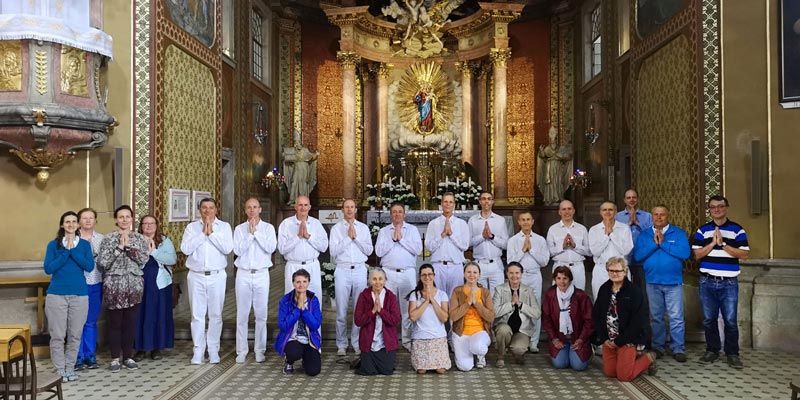
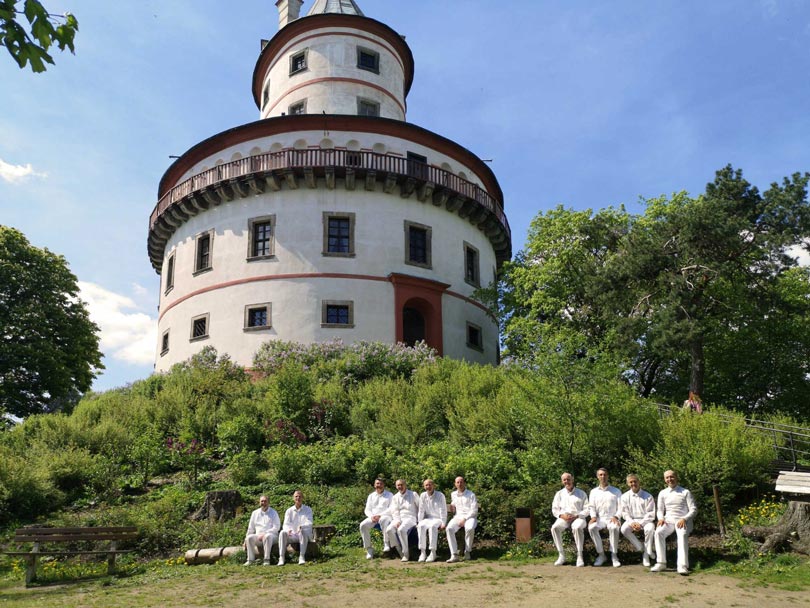
Oneness-Dream were founded in 2011 and have recorded four albums. The singers are drawn from different Sri Chinmoy Centres around the world.
Sri Chinmoy composed over 22,000 songs - expressing a range of spiritual emotions and devotional sentiments.
“Soulful music is the music that wants to eventually transform our consciousness. It carries us into the Universal Consciousness and makes us feel that we are in tune with the highest, with the deepest, with the farthest.”
– Sri Chinmoy1
External links
- Oneness-Dream at Radio Sri Chinmoy
Photos: Kedar
- 1. Sri Chinmoy, God the Supreme Musician, Sri Chinmoy Lighthouse, 1974
Peace Run video from Nepal
Recently, the Sri Chinmoy Oneness-Home Peace Run visited Nepal. This video gives an insight into how the Peace Run touches many people, who take the opportunity to share in the spirit of the Run. It also gives a glimpse into the natural beauty and rich cultural heritage of Nepal.
During the week long visit, the Peace Run visited several schools, with children taking part in ceremonies focused on the message of peace. The Peace Run was also warmly welcomed by a variety of dignitaries and local people who offered their prayers and good-wishes for peace.
"May the flames of peace-torch
Kindle and awaken
Each and every world-citizen."
Sri Chinmoy 1
The Peace Run is co-ordinated by an international team of runners from around the world.
Related
- 1. Sri Chinmoy, A love-bathed heart, Agni Press, 1993
Sri Chinmoy Ten and Six Day Race 2018
Recently, the 2018 edition of the Sri Chinmoy Ten and Six Day race finished in Flushing Meadows, New York. For this testing multiday event, there were over 80 entrants who braved the cold, wind and rain in an unusually cold edition. The winner of the men's Ten Day Race was Ashprihanal Aalto from Finland, an accomplished multiday runner and World Record holder for 3,100 miles. Despite health issues, he managed a daily average of 82.6 miles. In the women's Ten Day event Ilvaka Nemcova from the Czech Republic completed 621 miles.
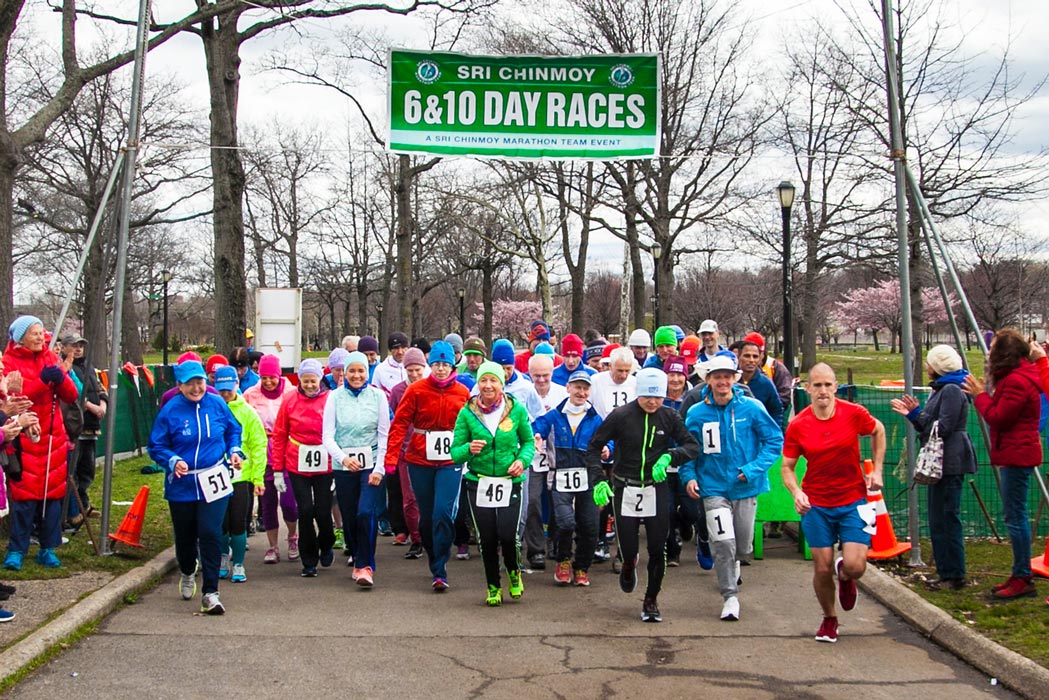
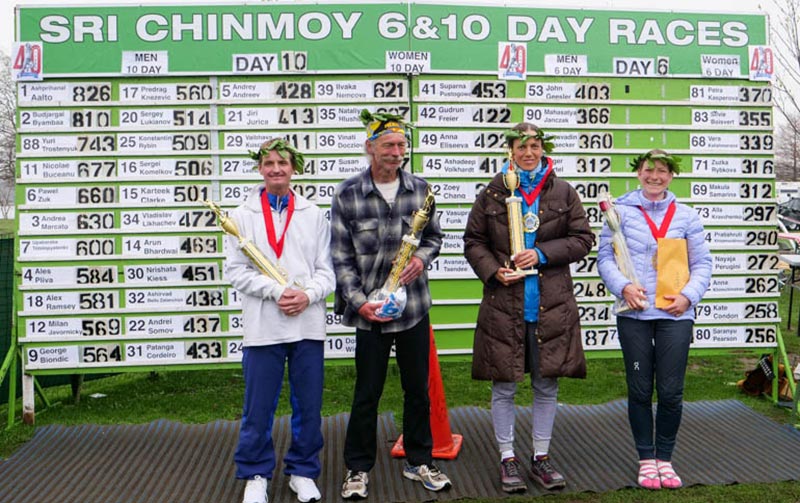
Ten Day Race
- Men: Ashprihanal Aalto - 826 miles
- Women Ilvaka Nemcova - 621 miles
Six Day Race
- Men - John Geesler (USA) - 403 miles
- Women - Petra Kasperova, Czech Republic - 370 miles

The Sri Chinmoy Marathon Team have been organising multiday events in Flushing Meadows, New York since 1985 and the inaugural 1,000 mile race. Over the years this has evolved into the present format of a six and ten-day race. The race was founded by Sri Chinmoy who saw running as an opportunity to enable physical fitness but also spiritual self-transcendence. To put on the race, a team of volunteers work around the clock to set up the race, count runners, cook food and provide medical support.

A multi-day event requires the runner to dig deep and use all aspects of his being to overcome the physical and mental challenges of the event.
“We compete not for the sake of defeating others, but in order to bring forward our own capacity. Our best capacity comes forward only when there are other people around us. They inspire us to bring forward our utmost capacity, and we inspire them to bring forward their utmost capacity”
– Sri Chinmoy 1
Other photos of the race

Petra Kasperova - 6 day winner

Asprihanal Aalto


Yuri Trostenyuk - a former 10-day and 3100 mile Race winner

The race goes on through the night - the clock runs 24 hours a day.

The final runner to cross the line
Related
- Six and Ten Day Race at Sri Chinmoy Races
Photographers
- Jowan (photo album)
- Utpal (Perfection Journey)
- Prabhakar (photo album)
- 1. Sri Chinmoy, The body: humanity's fortress, Agni Press, 1974
If I were a book, what would my title be? - a creative project
Sri Chinmoy asked his students to meet together frequently for meditation, spiritual activities and fun that he called Joy-Days. Very often, these happen over a weekend when people from all the Sri Chinmoy Centres in a country, or even in different countries, can come together.
On one such recent weekend in Co Wicklow, Ireland, students of Sri Chinmoy from Ireland and England came together. As part of the weekend, different members engaged in a spontaneous creativity project given the simple question 'If I were a book, what would my title be?'. Ambarish from the Dublin Centre collected all of these questions and made some charming videos, which you can see below:
Whatever we do in life — whether we are praying, talking to our friends or participating in sports — we are trying to receive joy at every moment. But joy we can have only when we have a peaceful life. We are all longing for joy, and joy abides only in peace. At every moment we are given the opportunity to feel peace in the depths of our heart on the strength of our prayer-life and our meditation-life.
Sri Chinmoy 1

- 1. Sri Chinmoy, Aspiration-body, illumination-soul, part 2, Agni Press, 1993
International Day of Happiness 2018
In 2012, the United Nations General Assembly designated 20 March as the International Day of Happiness, and Sri Chinmoy Centres around the world have been marking this day with workshops, poetry readings and cultural events every year since. Dublin and New York were just two of the Sri Chinmoy Centres that organised events to celebrate this day.
Dublin
Workshop and poetry reading

This years' programme was an hour and a half long, interspersing meditation exercises and songs with poems on the theme of happiness. The audience was welcomed by Mangala Keenan from the Dublin Centre, who introduced the event with some background history of International Happiness Day, noting that the first year's events organised at the United Nations incorporated readings from the book Jewels of Happiness by Sri Chinmoy. Mangala spoke about Sri Chinmoy’s service to the United Nations for over 35 years and how, as his students, we continue to offer such events to the public.
Some of the poetry readings were by members of the Dublin Centre, including Cathy Torres, who read Sri Chinmoy's poetry along with her own composition Happiness in Silver, Gold and Diamond, which by the end had the entire audience smiling.
New York
Panorama Cafe, in Queens, an enterprise owned by Sri Chinmoy's students, hosts regular poetry readings, music performances and other cultural events - including one to celebrate this year's Day of Happiness.

Sri Chinmoy wrote many poems and gave several talks about the importance of cultivating happiness.

Sri Chinmoy’s book The Jewels of Happiness was released on 20 March 2013 to honour the International Day of Happiness and includes writings on how we can cultivate real happiness in our daily life. It was later released in audiobook form, read out by such luminaries as Archbishop Desmond Tutu, Roberta Flack and Carl Lewis.
 You can listen to a selection of recitations from the book at Radio Sri Chinmoy.
You can listen to a selection of recitations from the book at Radio Sri Chinmoy.
“If you are happy, it will help you to a great extent. If you are unhappy, you won’t make any progress at all. On the contrary, you will be marching backwards. Real outer happiness is not self-deception. It does not come from wasting time and indulging in pleasure-life. Real outer happiness is something totally different. It comes from inner joy and inner satisfaction.”
Sri Chinmoy 1
Sri Chinmoy suggested an integral approach to happiness. Both prayer and meditation are important, but he also encouraged a dynamic approach to life - he felt happiness could be cultivated through sport and serving the world.
Related pages
- A Quest for happiness by Abhinabha
- Jewels of Happiness website
- Poems on Happiness at Sri Chinmoy Poetry
- 1. Sri Chinmoy, The giver and the receiver, Agni Press, 1987
Seeking Perfect Health - New book
Perfect Health is a new book which compiles the writings of Sri Chinmoy on the subject of health.
 Perfect Health looks at the important subject of health from a spiritual perspective. In particular, Sri Chinmoy mentions how our state of mind can have an influence on our body and mental health. This book includes a question and answer section, where Sri Chinmoy advises on practical steps that readers can take to improve their overall health and well-being
Perfect Health looks at the important subject of health from a spiritual perspective. In particular, Sri Chinmoy mentions how our state of mind can have an influence on our body and mental health. This book includes a question and answer section, where Sri Chinmoy advises on practical steps that readers can take to improve their overall health and well-being
Topics include
- How to deal with stress and depression.
- The link between health and karma.
- How to maintain healthy weight.
- How to get the best night’s sleep.
Link between health and meditation.
This book will be relevant to anyone who is interested in a spiritual perspective on life and good health. It gives an insight into how we can cultivate our life energy, peace of mind and live more in harmony with our body, environment. Sri Chinmoy's book will inspire us to gain more satisfaction from looking after and appreciating our health.
“It is one thing to have good health and another thing to deliberately maintain good health. Unless you are consciously keeping good health, at any moment you may be attacked by some forces. It is like having a large amount of money without knowing about it. If you are not conscious of it, you may easily lose it.”1
Related
- Seeking Perfect Health at Blue Beyond Books
- 1. Sri Chinmoy, The outer running and the inner running, Agni Press, 1984
Shamita's Run across Austria
During the depths of winter, Shamita Achenbach-Konig undertook a challenging seven day run across the length of Austria. She ran 640km over a total of seven days to take her from her birthplace of Bregenz, in the very west of Austria, to her home in Vienna.
Shamita, a member of the Sri Chinmoy Centre, undertook this feat of endurance to put into practise Sri Chinmoy's philosophy of self-transcendence.
“I do not have any set goal; my goal is self-transcendence. I always try to transcend myself. I do not compete with the rest of the world. I compete only with myself, and I try to become a better human being. This is my ultimate goal.”
– Sri Chinmoy 1
Sri Chinmoy teaches that physical self-transcendence can also enable us to bring to the fore our inner capacities such as endurance, patience and faith. As Shamita says:
"When we run, we connect with a higher world, with a divine consciousness that is the same as meditation. For me, running is meditation or a long prayer in which thoughts become still…one gains access to levels of consciousness that bring light, joy, peace, and happiness."
During her run, Shamita had to contend with 4,000m of ascent and descent, plus the harsh weather of an Austrian winter. Shamita is a professional cellist by profession but has been running ultra-distance races with the Sri Chinmoy Marathon Team for over 25 years.
Related
- Shamita's Run at Sri Chinmoy Races
- 1. Sri Chinmoy, Aspiration-Body, Illumination-Soul part 2, Agni Press, 1993
European Peace Run begins in Bulgaria
Heavy snowfall and freezing temperatures couldn’t dampen the enthusiasm for the start of the Sri Chinmoy Oneness-Home Peace Run in Bulgaria last weekend.
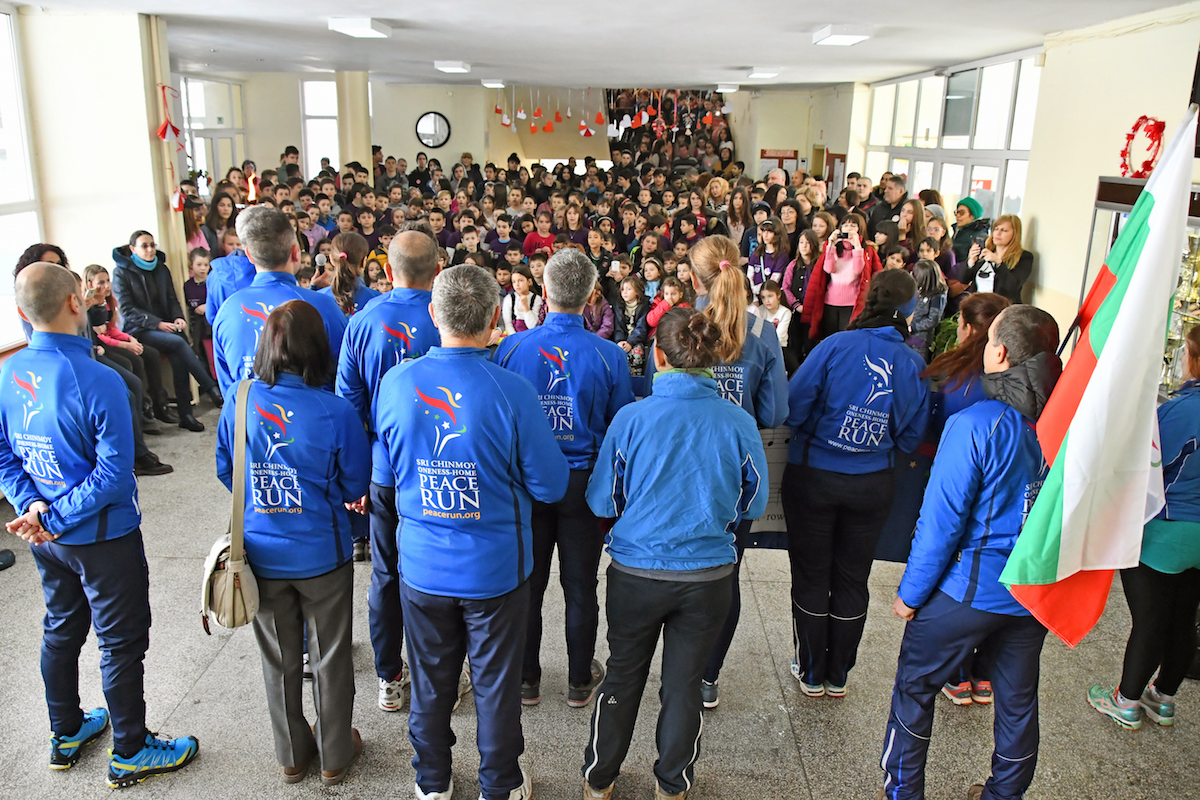
The run, which aims to promote peace and harmony, began it’s 2018 journey from the capital of Bulgaria Sofia.
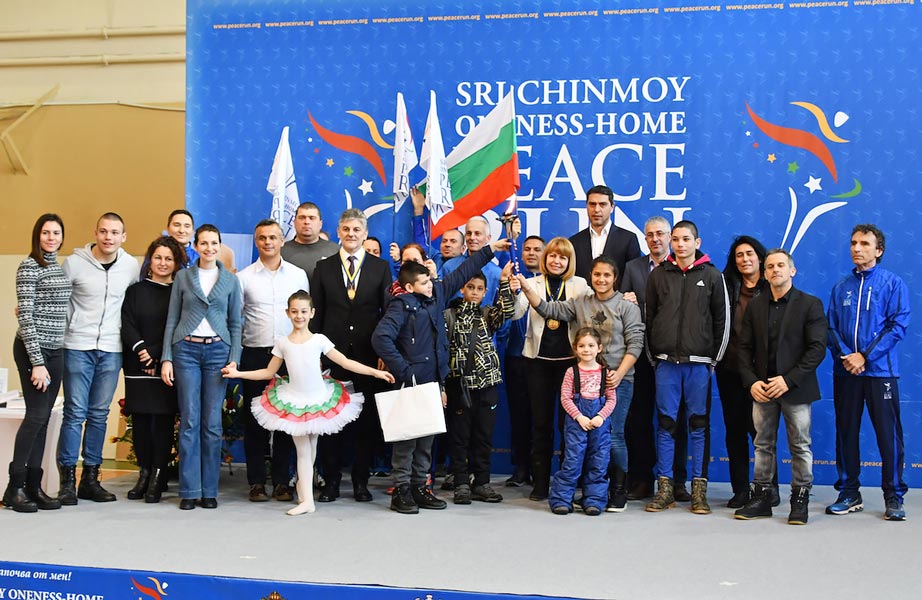
The start of the run was witnessed by a cross-section of the local community who offered their good wishes to the runners.
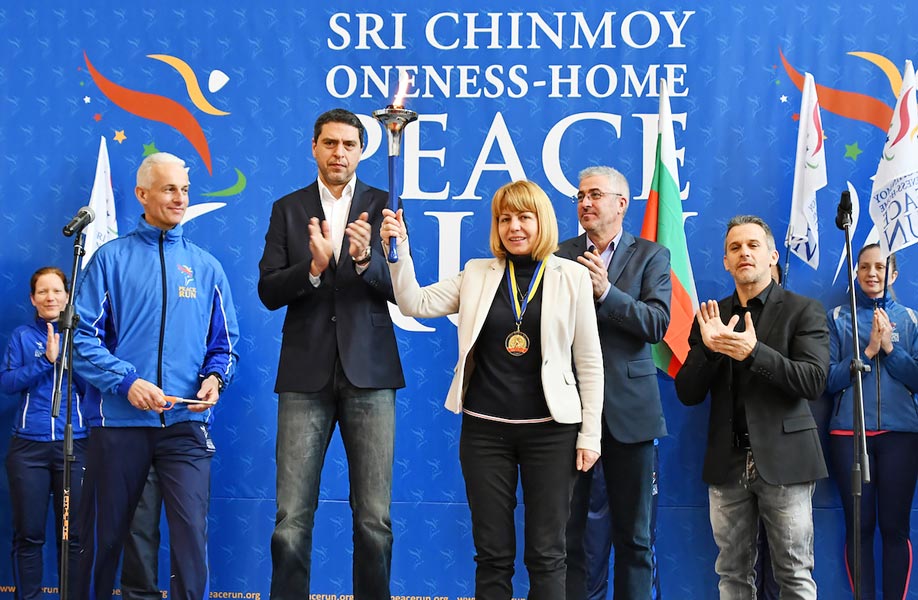
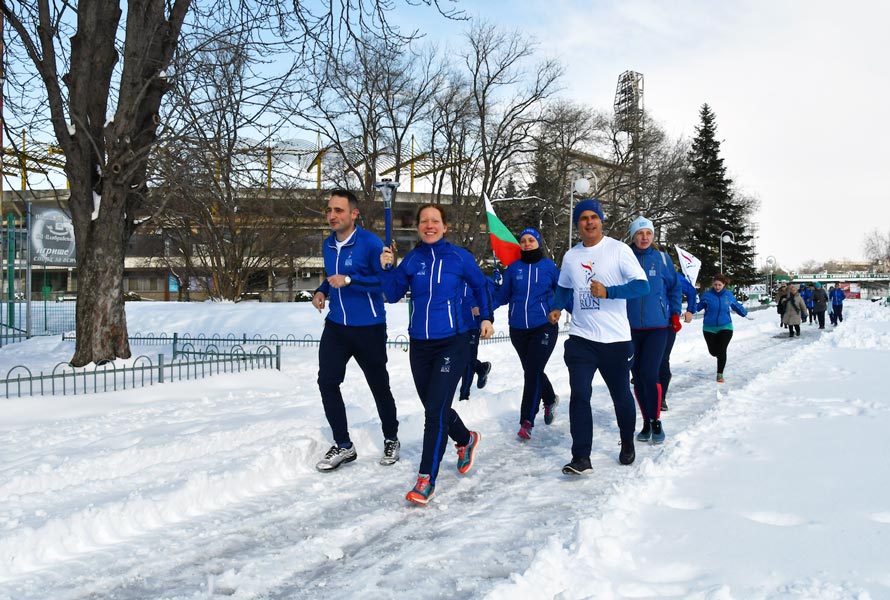
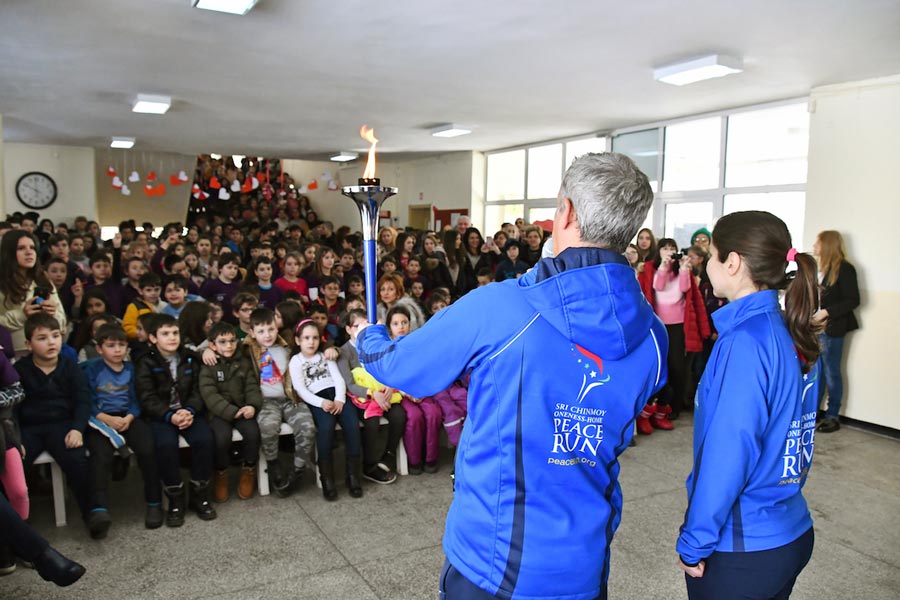
“No price is too great to pay for inner peace. Peace is the harmonious control of life. It is vibrant with life-energy. It is a power that easily transcends all our worldly knowledge.”
- Sri Chinmoy 1
Related
- 1. Yoga And The Spiritual Life. The Journey of India’s Soul., Agni Press, 1971
Abhejali completes the 'Oceans Seven' swimming challenge
Recently, Abhejali Bernardova, a member of the Sri Chinmoy Centre from Zlin in the Czech Republic, successfully swam across the Cook Strait of New Zealand to become only the 10th swimmer and 4th woman to complete the global Oceans Seven challenge.

The Oceans Seven Challenge was founded in 2008, creating the challenge of swimming seven major crossings of open water around the world.
The swim crossings include The English Channel, the Strait of Gibraltar, Catalina Channel in California, Tsugaru Channel (Japan), the Irish Channel between Ireland and Scotland, Molokai (Kaiwi) Channel in Hawaii and the Cook Strait. The swims have to be completed under traditional English Channel rules (unassisted and no neoprene suit)

With the support of fellow members of the Sri Chinmoy Marathon Team, Abhejali successfully completed her seventh and final challenge between the two major islands of New Zealand.
Abhejali's swim occurred in the aftermath of cyclone Gita hitting New Zealand just a few days before. During the swim, she had to overcome seasickness, jellyfish, strong currents, cold water and many other challenges to finish the 22km distance (as the crow flies) in a time of 13 hours, 9 minutes and 48 seconds. However, Abhejali remarked on how the tides were so strong, that she spent time swimming but effectively going backwards.
"Maybe for about three hours, or a little longer I basically swam but still actually the current was taking us back, the direction to Wellington and then there were big swells and I was seasick for the first five hours and then a little bit more." (Radio NZ)
Asked how she felt after finishing the epic swim, Abhejali remarked: "Grateful and happy."
- Longer article on Abhejali's feat by Vasanti Niemz at Sri Chinmoy Races
- Video about swimming the English Channel.


